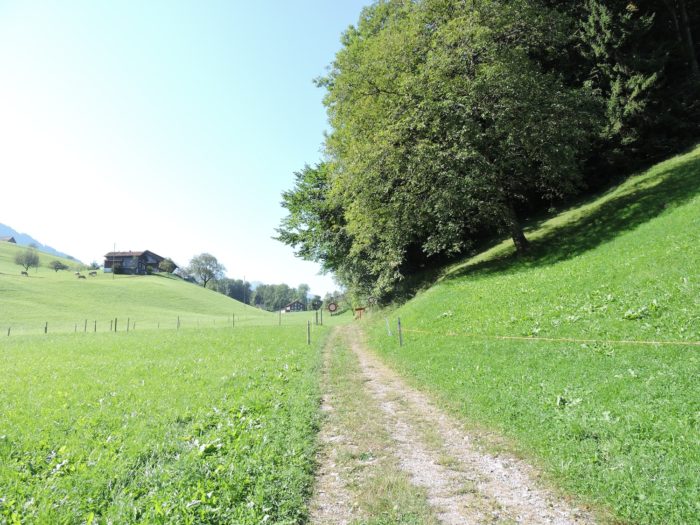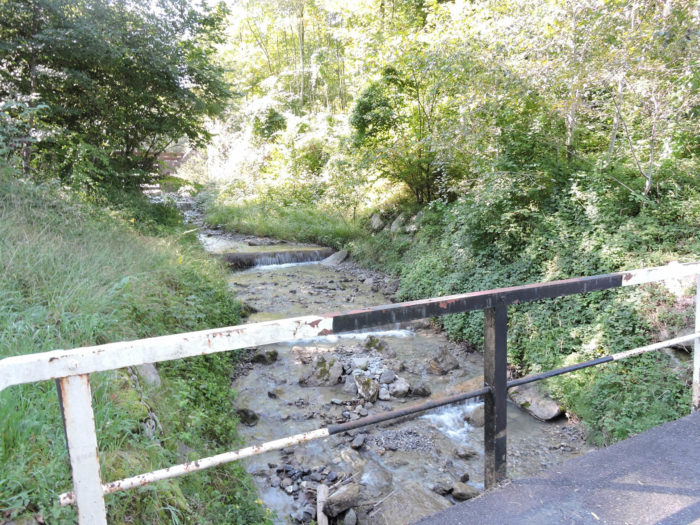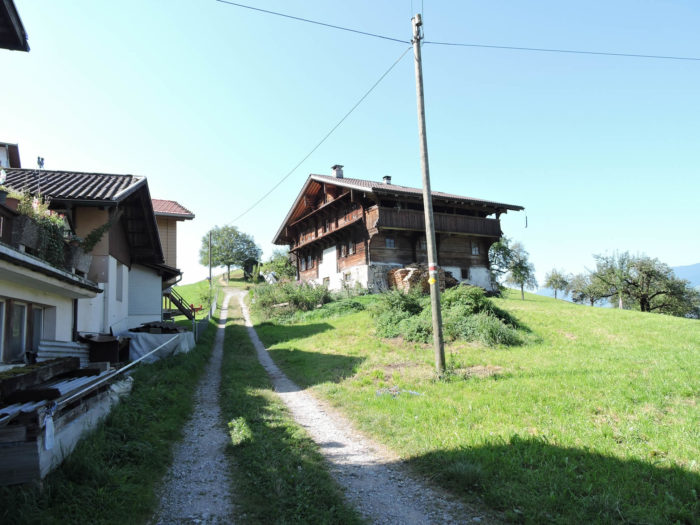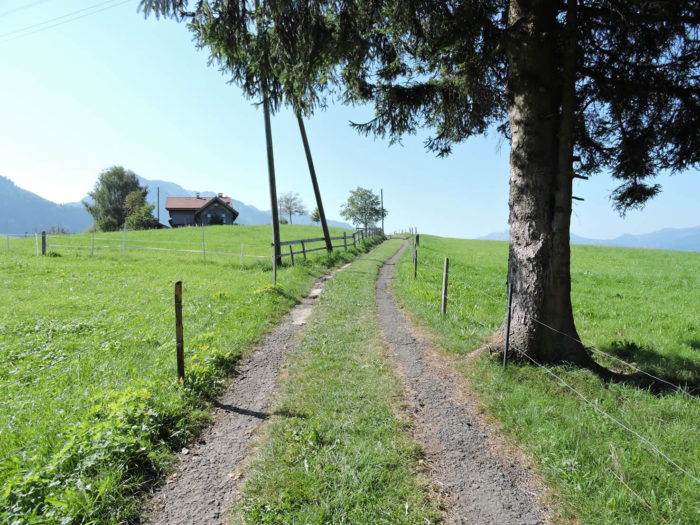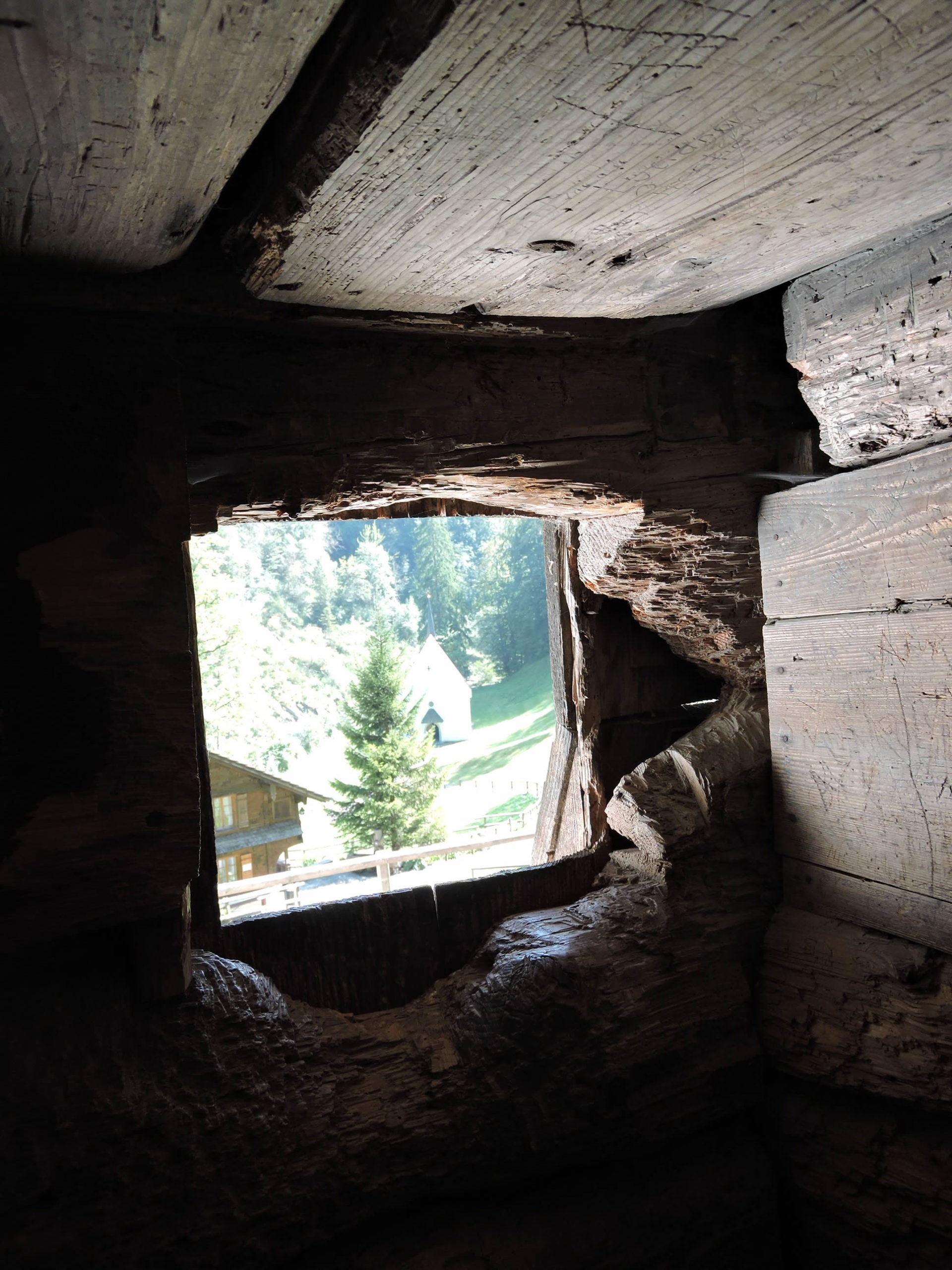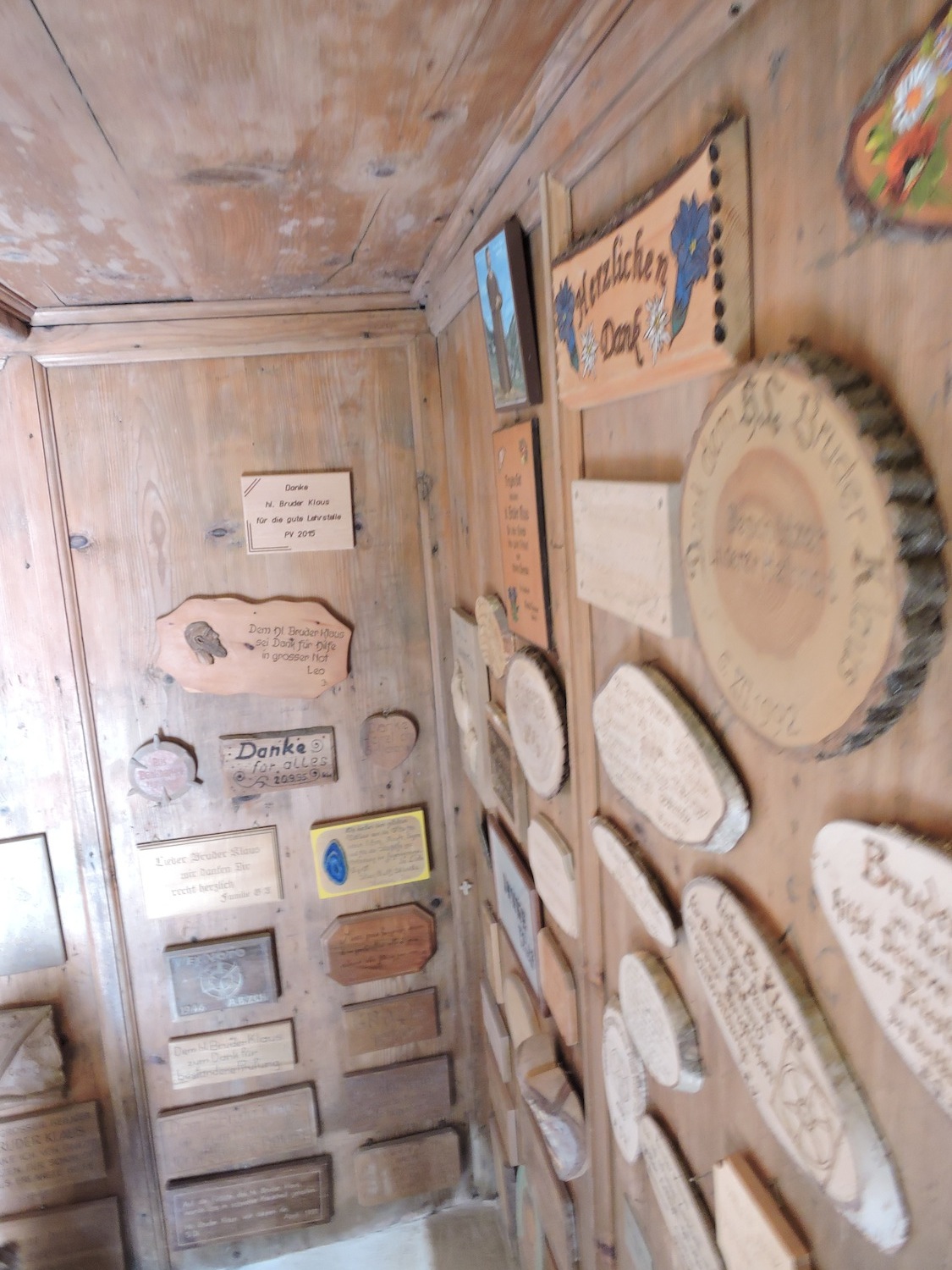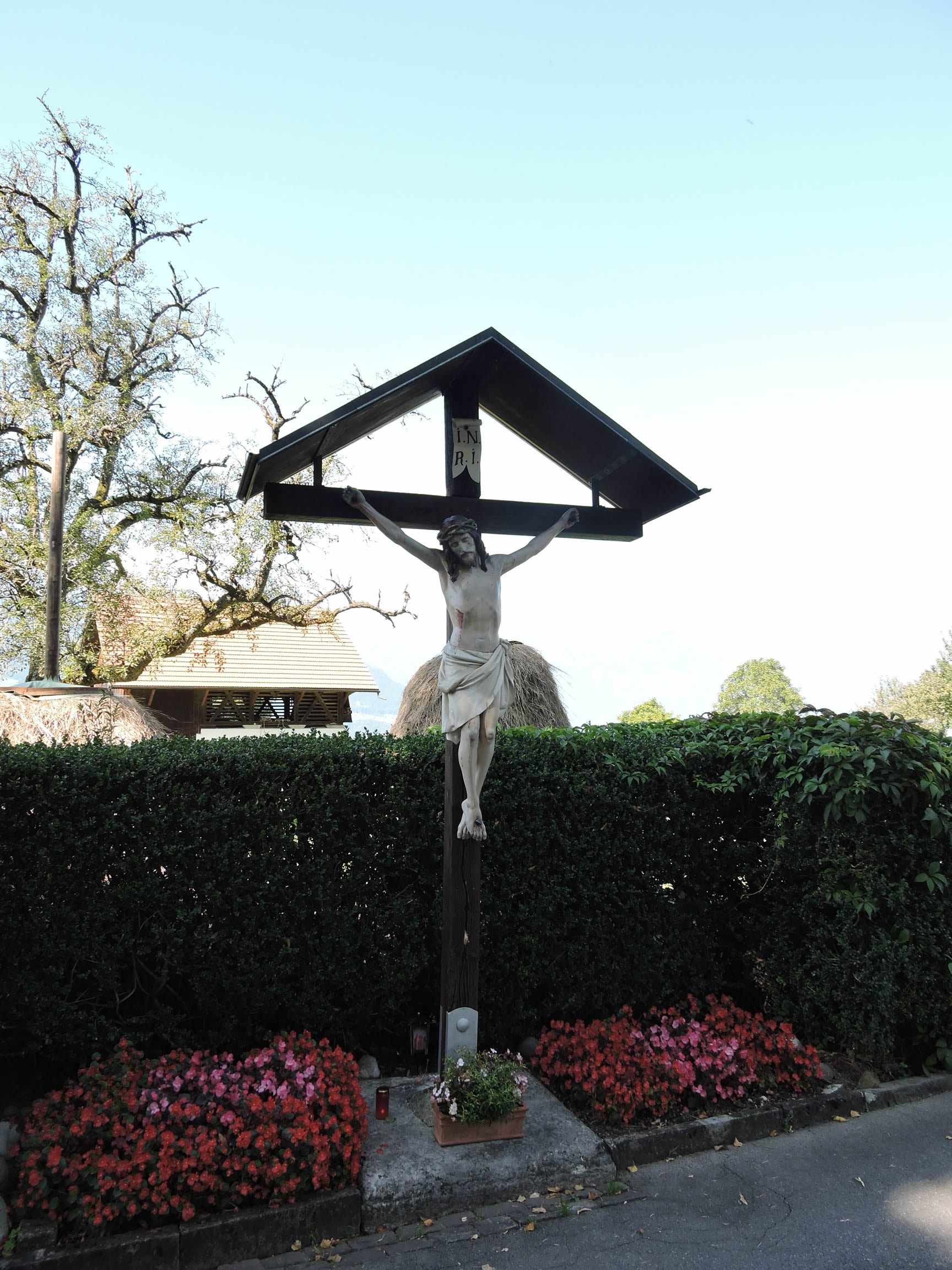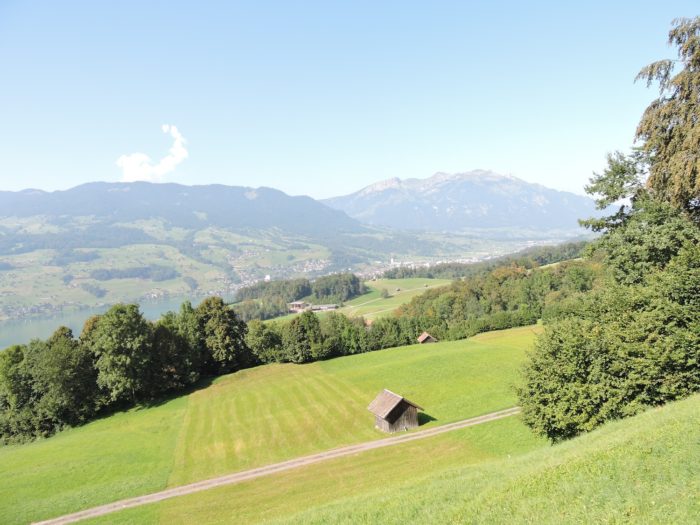At the Great St Nicholas of Flüe
DIDIER HEUMANN, ANDREAS PAPASAVVAS

We divided the course into several sections to make it easier to see. For each section, the maps show the course, the slopes found on the course, and the state of the route (paved or dirt roads). The courses were drawn on the « Wikilocs » platform. Today, it is no longer necessary to walk around with detailed maps in your pocket or bag. If you have a mobile phone or tablet, you can easily follow routes live.
For this stage, here is the link:
https://fr.wikiloc.com/itineraires-randonnee/de-stans-a-sachseln-par-la-via-jacobi-4-32118185
|
Not all pilgrims are necessarily comfortable using GPS or navigating routes on a mobile device, and there are still many areas without an internet connection. For this reason, you can find several books on Amazon dedicated to the major Via Jacobi 4 route, which runs through the heart of Switzerland and over the Brünig Pass. The first guide leads pilgrims through the German-speaking part of Switzerland up to Fribourg, while the second continues through French-speaking Switzerland to Geneva. We have also combined these two books into a compact, lighter, and highly practical version. While the descriptions have been slightly condensed, they remain detailed enough to guide you step by step along the way. Recognizing the importance of traveling light, this latest edition has been designed to provide only the essentials: clear and useful information, stage by stage, kilometer by kilometer. The stages have been carefully adjusted to ensure accessibility and alignment with available lodging options. These books go beyond simple practical advice. They guide you kilometer by kilometer, covering all the crucial aspects for seamless planning, ensuring that no unexpected surprises disrupt your journey. But these books are more than just practical guides. They offer a complete immersion into the enchanting atmosphere of the Camino. Prepare to experience the Camino de Santiago as a once-in-a-lifetime journey. Put on a good pair of walking shoes, and the path awaits you.
|
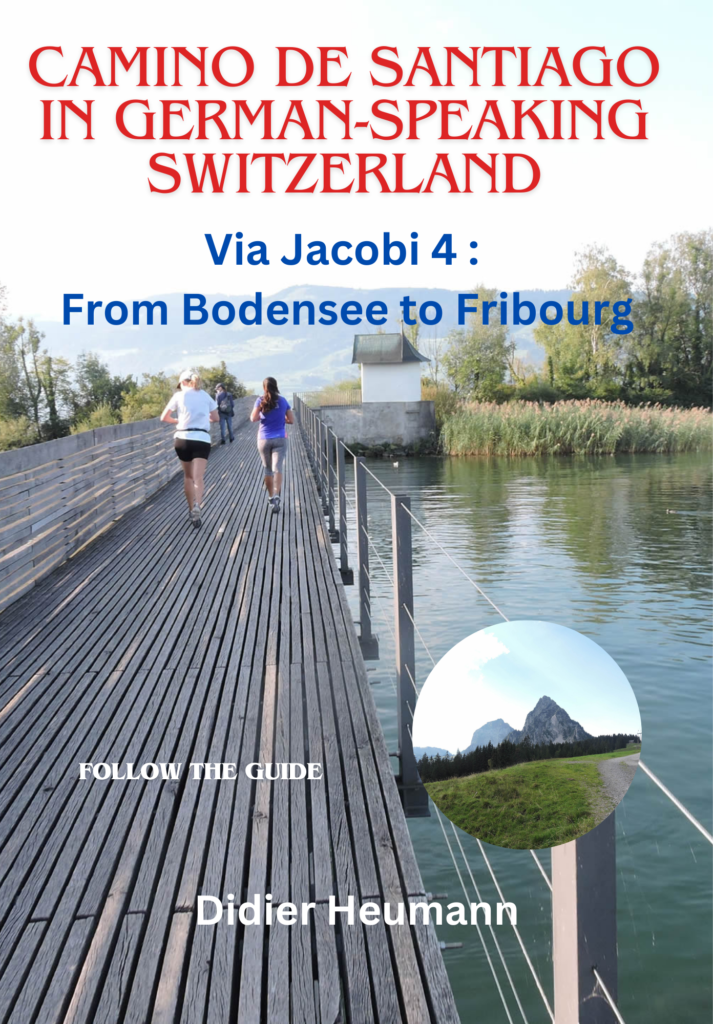
|
 |
If you only want to consult lodging of the stage, go directly to the bottom of the page.
Today, as in days of old, you are preparing to follow in the footsteps of Brother Nicholas, exploring the paths he once traversed, the sacred routes leading from Ranft, where he lived as a hermit, to the eternal rest of his tomb in Sachseln. The fame of this wise hermit, his unwavering piety, were such that monarchs of ancient Europe eagerly sought his enlightened counsel. In the year of our Lord 1470, Pope Paul II granted an indulgence to the sanctuary of Ranft, quickly turning it into a favored pilgrimage site. Despite his illiteracy and withdrawal from the world, but thanks to his subtle art of promoting peace, Brother Klaus remains the unifying soul of the Swiss Confederation. In the year 1481, during the Diet of Stans, where the rural cantons feared the admission of the cities of Fribourg and Soleure into the young Swiss Confederation, he drafted a document, now lost, laying the foundations for a beneficial compromise that preserved peace. Beatified in the year of our Lord 1669, the community of Sachseln erected a church in his honor where he now rests. It was only in the providential year of 1947 that Pope Pius XII canonized the hermit. Since then, Nicholas of Flüe is honored as the universal patron saint of peace, as well as the protector saint of the Swiss Guard within the sacred walls of the Vatican. When you set foot on the blessed ground of Ranft for the first time, you will be struck by the outpouring of devotion and the indescribable charm that permeates this haven of peace and bliss, a true jewel nestled in the valley.

Difficulty level: The elevations to be climbed (+623 meters/-611 meters) are quite significant, skillfully balancing ascents and descents. This is a stage not too arduous, but moderately demanding, across the mountain foothills of central Switzerland. However, a few steep slopes, sometimes exceeding 15%, will punctuate your day, especially at the first light of day, then in the Ranft valley, and at the conclusion of your journey. This route stretches between the half-cantons of Nidwald and Obwald, making up the canton of Unterwald. The initial portions of the journey unfold in gentle undulations, until reaching the steep valley where the Grosse Melchaa River meanders, near Ranft and Flüeli. Subsequently, the road will begin a descent, at first gentle and then steeper, leading you towards Sachseln, by the calm waters of Lake Sarnen.
State of the Via Jacobi: The profile of this stage reveals a predominance of paths over roadways:
- Paved roads: 8.5 km
- Dirt roads : 11.0 km
Sometimes, for reasons of logistics or housing possibilities, these stages mix routes operated on different days, having passed several times on these routes. From then on, the skies, the rain, or the seasons can vary. But, generally this is not the case, and in fact this does not change the description of the course.
It is very difficult to specify with certainty the incline of the slopes, whatever the system you use.
For those seeking « true elevations » and enthusiasts of genuine altimetric challenges, carefully review the information on mileage at the beginning of the guide.

Section 1: On the slopes of Stanserhorn

Overview of the route’s challenges: a rolling course, with numerous steep sections, both uphill and downhill.

|
We are in September, a month that stretches with enchanting softness, caressing the spirits of schoolchildren on a field trip somewhere towards the majestic Stanserhorn, rising above the picturesque town of Stans. It seems that in this exquisite part of Switzerland, schools love to merge with nature, offering their students lessons in the heart of enchanting landscapes.
|
 |
 |
|
The Via Jacobi begins its journey behind the imposing silhouette of the church, rushing forward like an impetuous stream along a steep alleyway paved with spirituality.
|
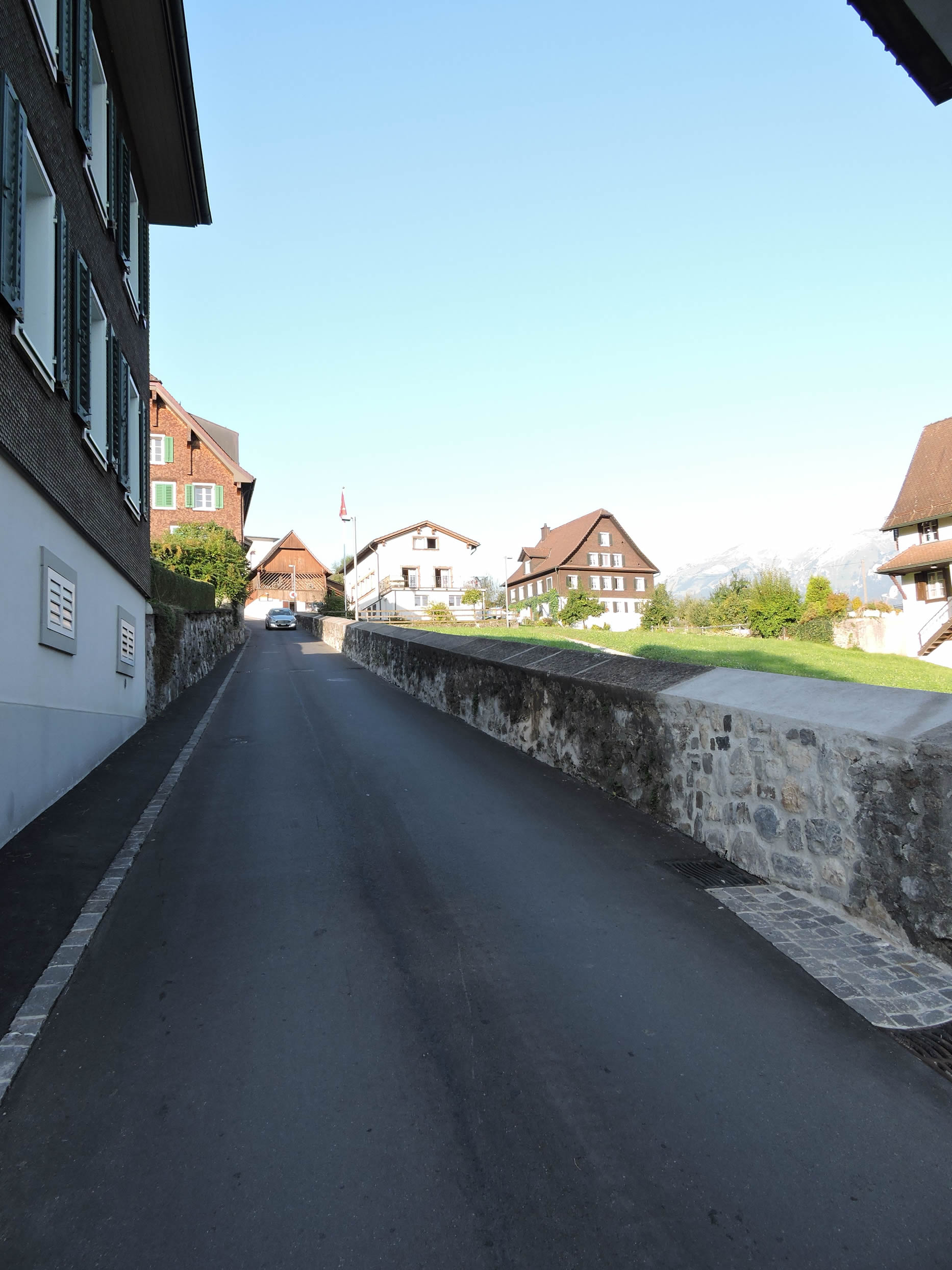 |
 |
| The road quickly leads to the modest Knirri Chapel, perched at the edge of the road. This chapel, dedicated to Maria zum Schnee, evokes an ancient legend of a furious avalanche that, in a capricious surge, spared this corner of land, leaving this haven of peace intact. |
 |
 |
On the horizon, beyond Stans, a glimpse of the majestic Lake Luzern timidly emerges, bordered by the charming villages of Hergiswil and Stansstad, belonging to the canton of Nidwalden, while further away, Horw appears near Luzern.
|
 |
 |
For passionate geographers, a map reveals the complexity of this extraordinary lake, trapped within multiple cantons like a mesmerizing natural wonder.
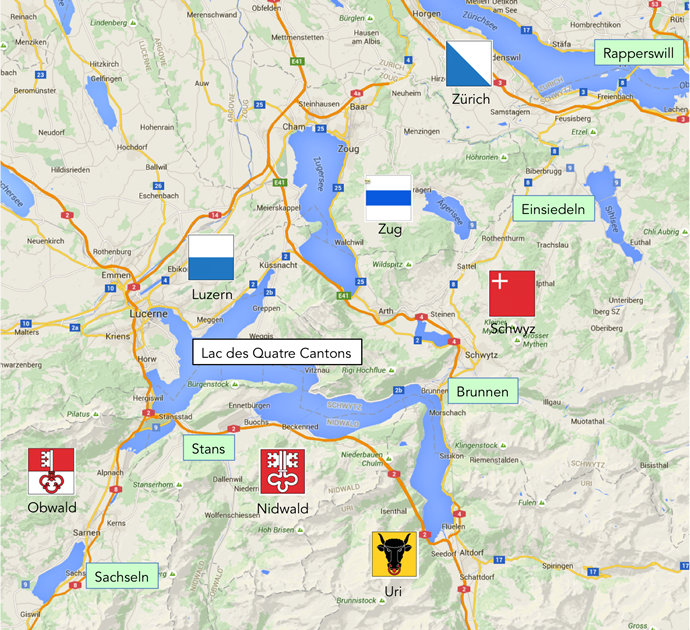
| The road then crosses the railway, where a modest train clings on its way to Stanserhorn, ascending to the skies aboard an antique engineering marvel. |
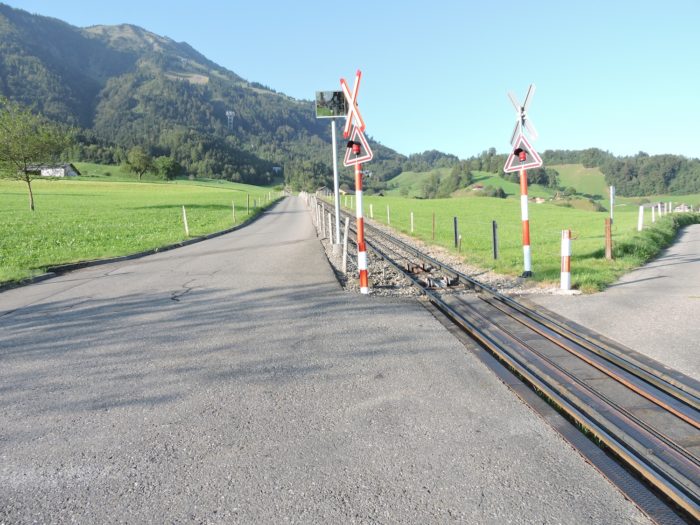 |
 |
It is here, in this postcard-worthy landscape, that mountains rise proudly, climbed eagerly by trains, offering travelers a majestic embrace with the skies. Before you, the Stanserhorn stands, defying time and space. The little wooden train timidly refuses to ascend all the way to the summit. A cable car, like an outstretched hand reaching for infinity, takes over at a higher point, promising the bold-hearted a breathtaking view, given the endless flow of tourists who, like modern pilgrims, embark from Stans at dawn.

| The road now winds through pastures, sloping up with infinite delicacy as if to better embrace the skies. Occasionally, a majestic house appears around a bend in the road, bearing witness to the harmonious marriage between man and nature. |
 |
 |
Suddenly, the road inclines a little more, leading towards the place called Christenmatt, where a sign announces the Ranft, five hours away on foot.

| In some areas, the slopes steepen slightly, erasing all traces of civilization. Here, there are no villages, not even hamlets, just a few solitary farms nestled in the heart of green meadows, cradling their secrets with the rhythm of the seasons. From this modest hamlet, the road continues obstinately, climbing gracefully among the foliage and undulating hills… |
 |
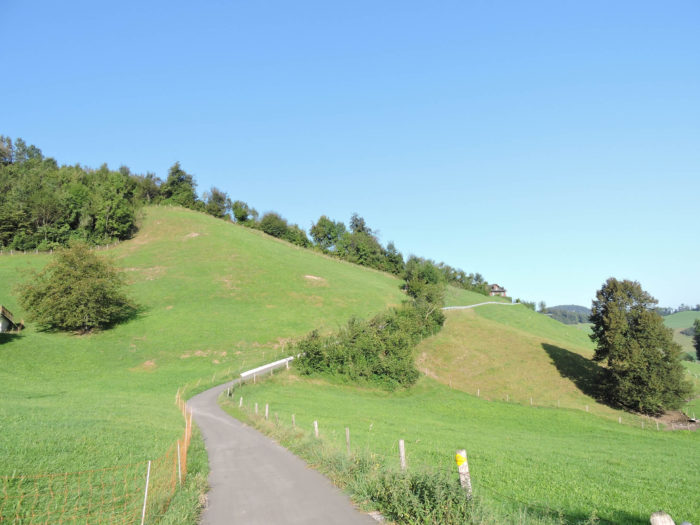 |
| … before giving way to a narrow trail, piercing through the heart of the forest like an arrow, then disappearing among the green valleys. |
 |
 |
To your right stretches Mount Pilatus, the stone giant overlooking Luzern with regal majesty, while on the other side of the lake, Mount Rigi sits like an impassive guardian of the shimmering waters. Although your route does not delve into their mysteries, a cogwheel train, defying the laws of gravity, climbs Pilatus’s slopes with unsuspected audacity, offering travelers a dizzying dance with the heights. It is a high place where tourists from Luzern flock in droves.

| Your trail now winds through the meadows, where cattle reign supreme, a living symbol of the symbiosis between man and nature. Modest farms emerge here and there, like scattered gems on a verdant mantle, while the lake sparkles below, a dazzling mirror reflecting the local grandeur. |
 |
 |
| In this vast expanse where the earth merges with the sky, children, like carefree nymphs, frolic joyfully, their laughter resonating like a celestial symphony. A magical harmony emanates from this communion with nature, awakening slumbering souls. |
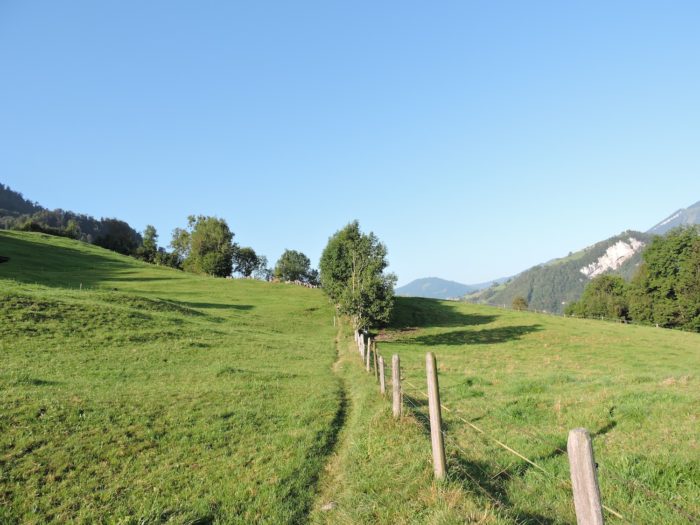 |
 |
| Then, like an inspiring muse, the Via Jacobi merges into a wide dirt road, scattering its secrets like a poet reciting verses in the shade of ancient oaks. |
 |
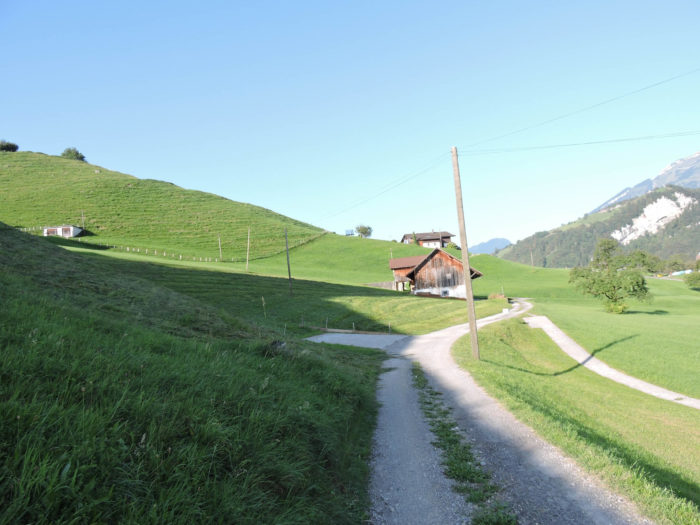 |
| Further along, it gracefully hovers over the farms of Murmatt, gazing upon the sleeping valleys before diving onto a paved road, like a graceful dancer moving elegantly through the hills. |
 |
 |
| The road, like a winding serpent, climbs even higher into the wildlands, gazing upon the dark cliffs that jealously guard the secrets of Stanserhorn. |
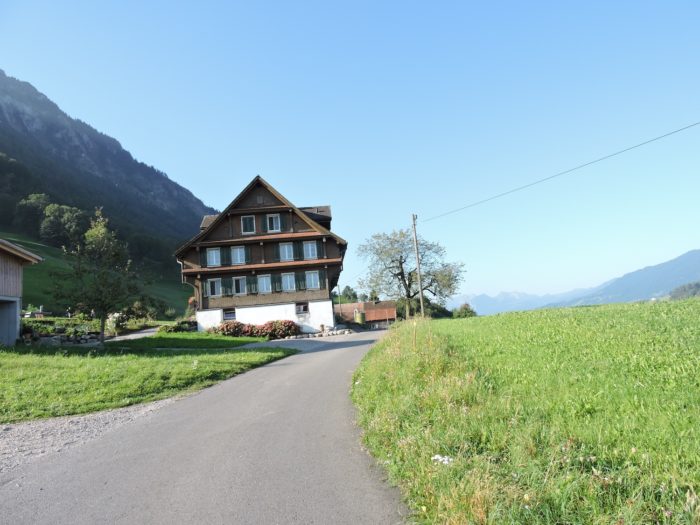 |
 |
Further ahead, a grassy trail emerges, plunging delightfully into the meanders of the meadows, announcing an imminent transformation of the landscape.

| You are now in Brunnisboden, where a rough, twisting trail unfolds, evoking a chaotic dance between thickets and clearings, a discordant symphony where each step resonates like a whisper in the forest’s silence. Here, far from the enchanting glow of the meadows, the undergrowth fades into anonymity, suffocated by the monotony of bushes, scraggly shrubs, and wild grasses, while the timid sun struggles to pierce through the dense foliage. |
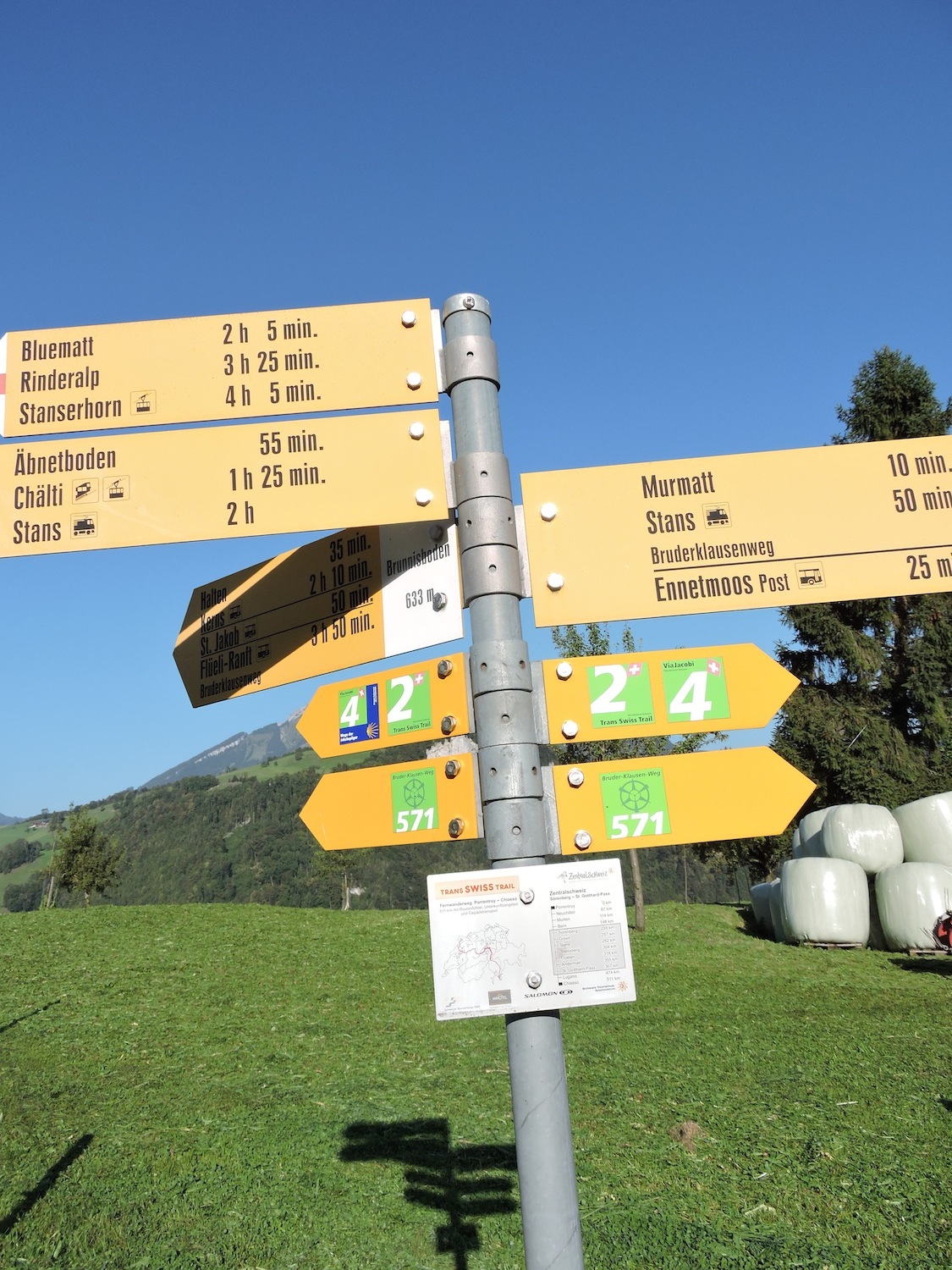 |
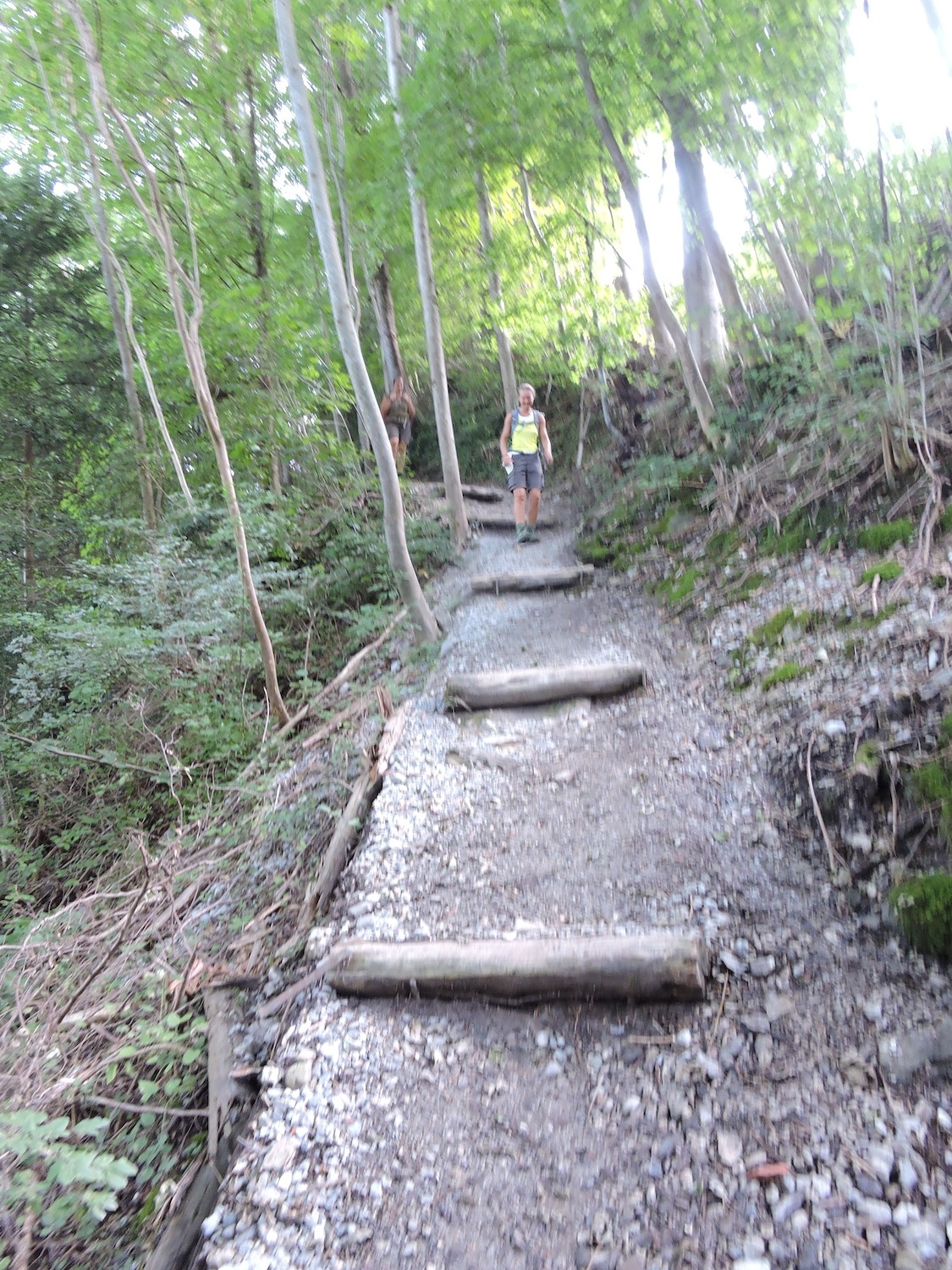 |
| An overwhelming desire seizes you, compelling you to flee this soulless vegetal darkness, to rediscover the soothing clarity of the open skies. |
 |
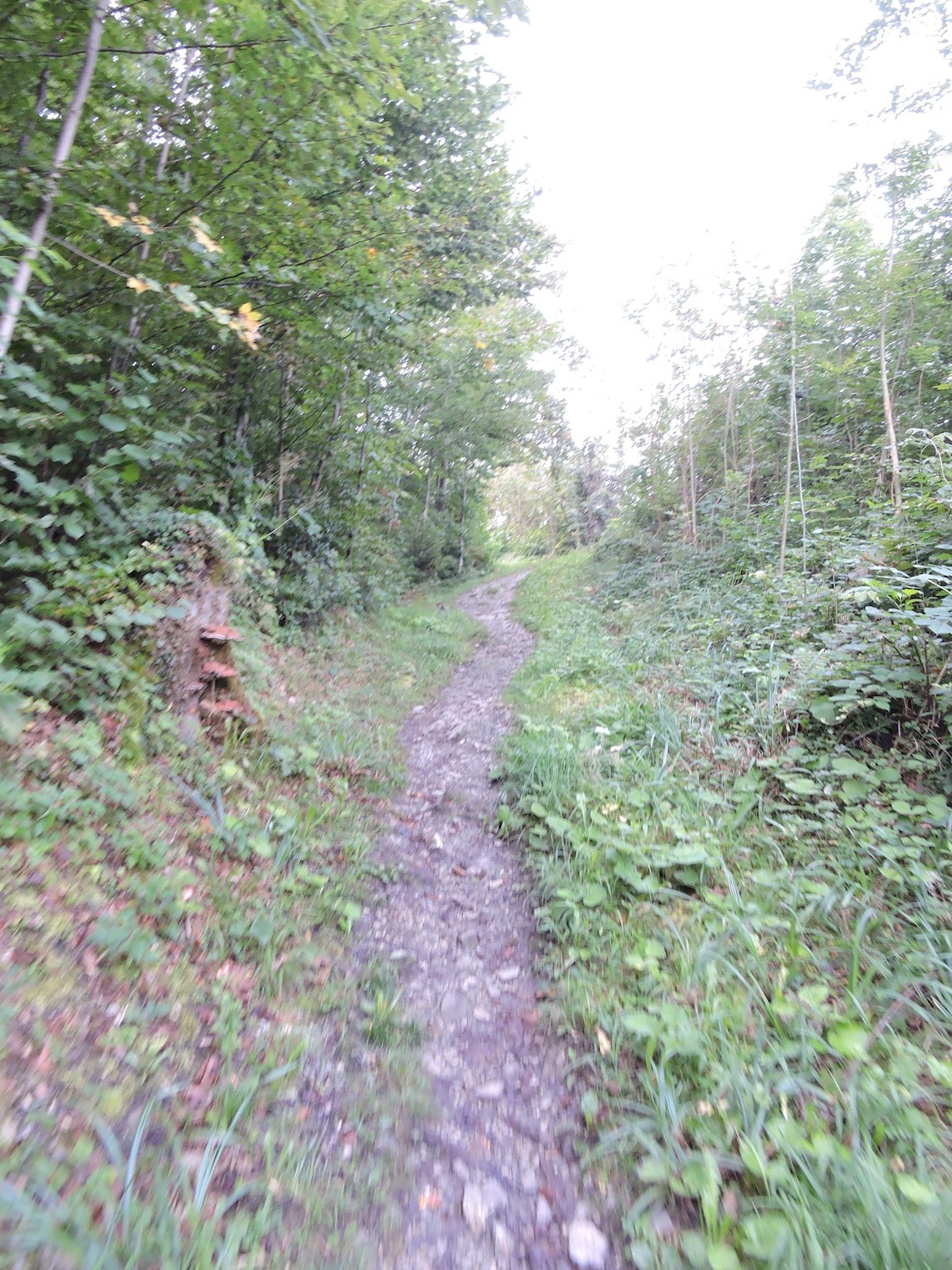 |
Section 2: Between the Half-Cantons of Unterwalden

Overview of the route’s challenges: a gently undulating course that is not too demanding, featuring a descent into the plains followed by an ascent on the other side towards the hills.

|
Until now, it had become customary to immerse yourself in landscapes often imbued with magic along the Swiss paths. However, here we might be faced with disappointment. This reality is not exclusive to the Via Jacobi, for the pilgrim cannot expect the extraordinary at every moment; their passage is ephemeral. Thus, further down, the poor and modest trail winding through the undergrowth gives way to a wide dirt road stretching at length beneath the canopy. In this setting, the beauty of the forest and the light are absents.
|
 |
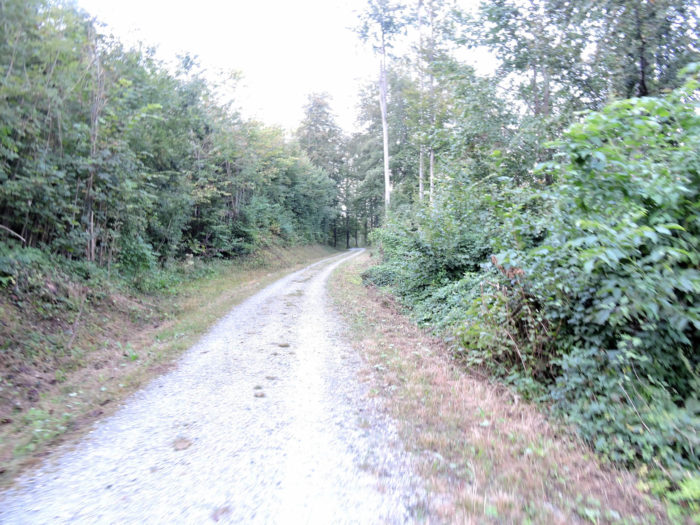 |
|
Further ahead, a vast plain unfolds, and the dirt road extends in length, like a forest road, running alongside the edge of the woods.
|
 |
 |
| Beyond an endless undergrowth, the path leads to Halten, seemingly merging into a modest, underdeveloped industrial area. |
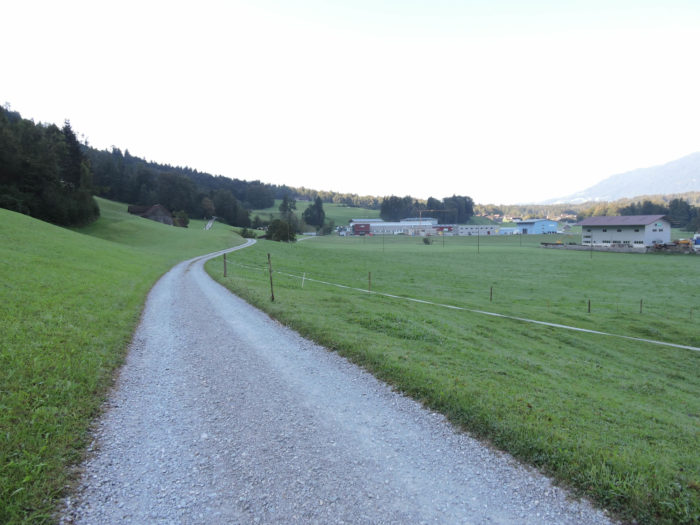 |
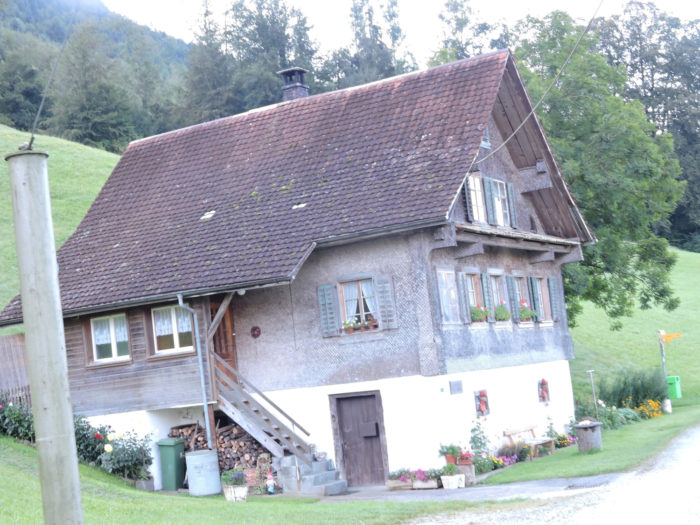 |
| A narrow road then crosses this industrial landscape before joining the cantonal road. |
 |
 |
| The Via Jacobi then follows this road towards St Jakob. From this point on, your spirits gradually lift. The landscape becomes more pleasant again. |
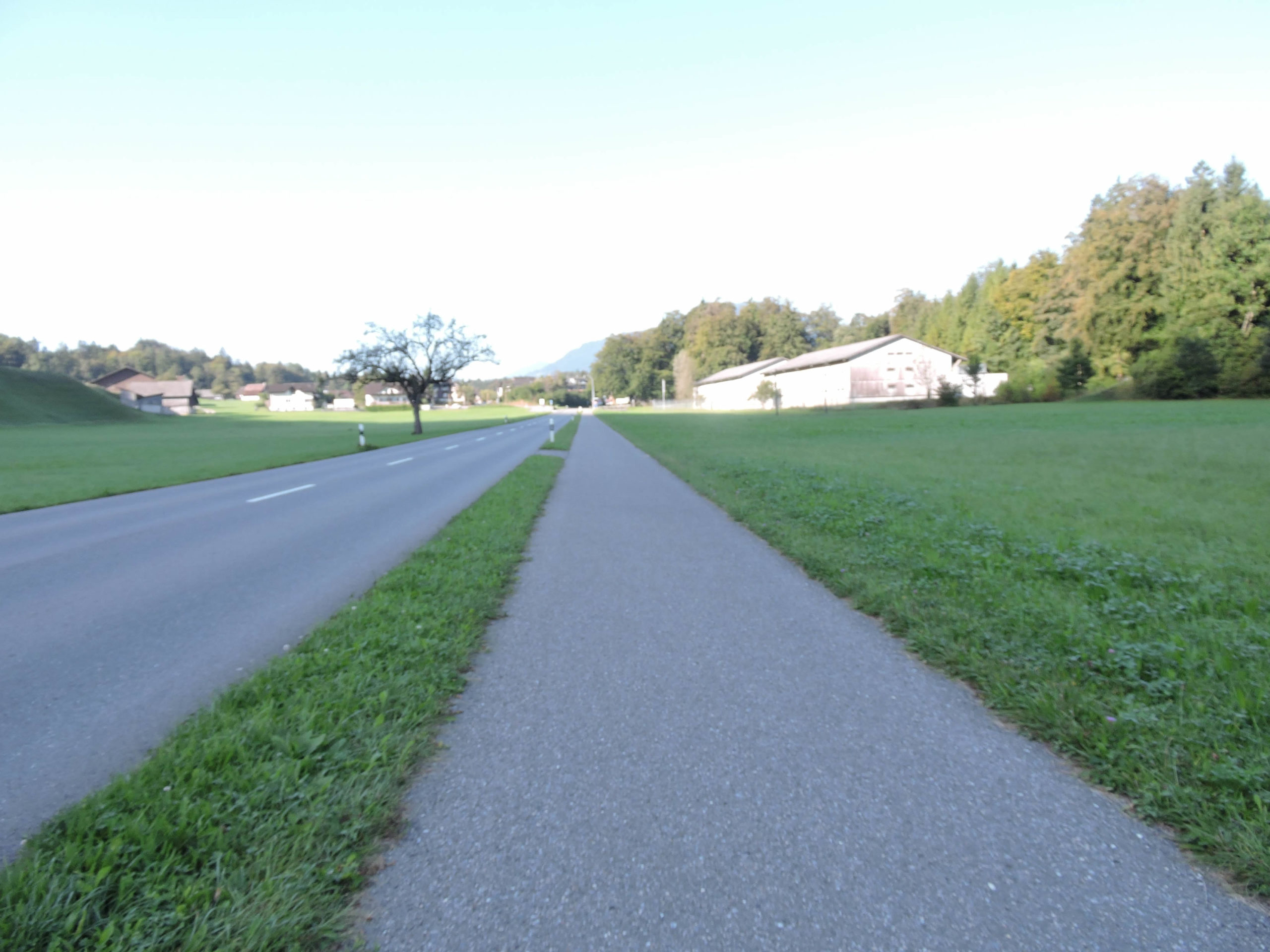 |
 |
| Further ahead, the route crosses St Jakob, a hamlet that is part of the municipality of Ennetmoos, encompassing various hamlets in the region that house nearly 2,000 souls. Here, you are at the boundary of the half-canton of Nidwalden. Shortly after crossing the Melbach, you will enter the half-canton of Obwalden. In the village, it is possible to find food and accommodation. Upon leaving, you cross the Rübibach. |
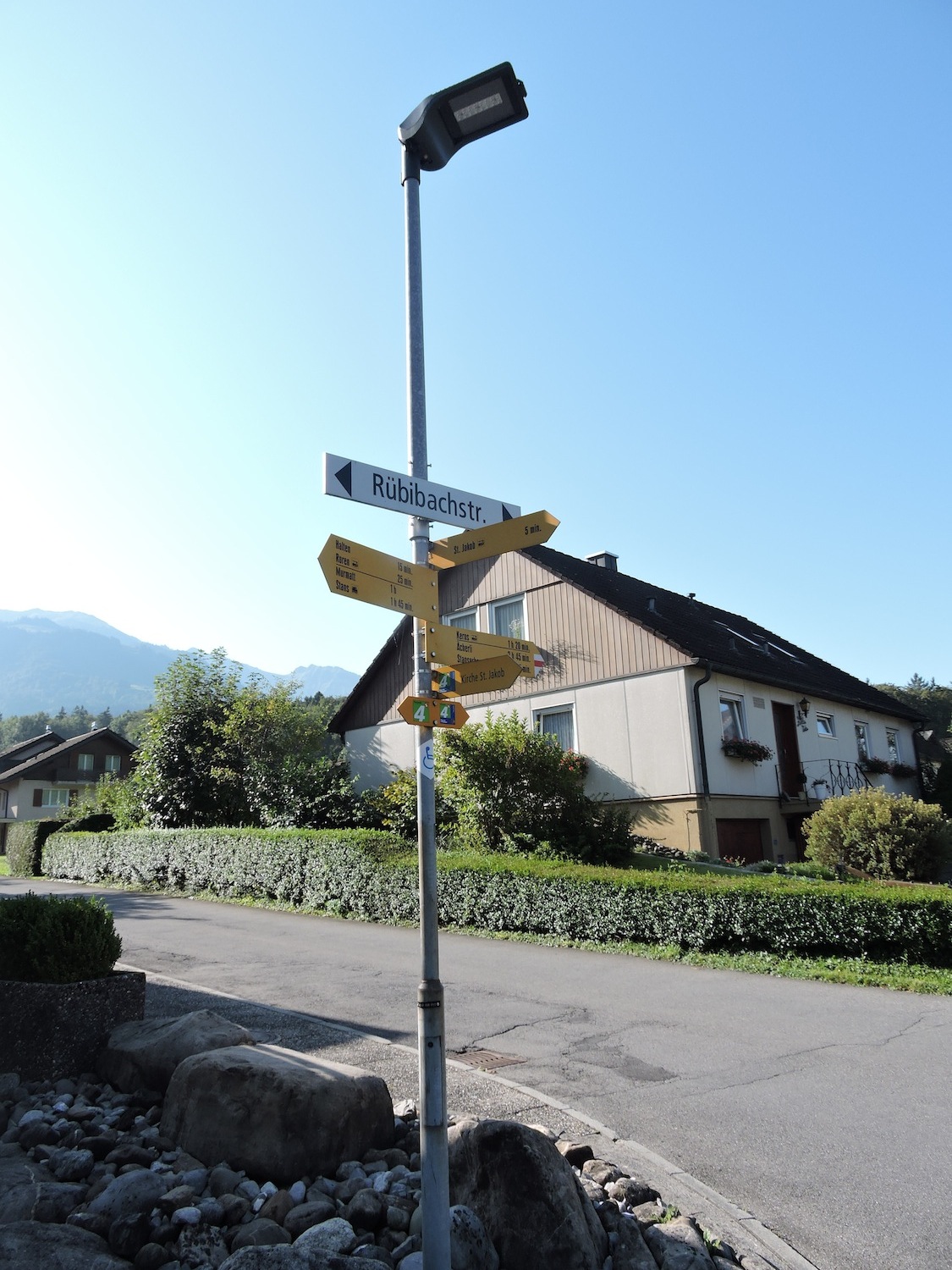 |
 |
| A dirt path then briefly follows the course of a stream before plunging into the undergrowth, where majestic beeches stand guard along the path. |
 |
 |
| Further ahead, emerging from the meadows, imposing granite blocks rise, announcing the arrival at the beautiful and spacious Infängi farm, built entirely of dark wood. |
 |
 |

|
Shortly after, the path once again enters an undergrowth to cross the Mehlbach. This river likely only carries water during floods, evoking remnants of glacial moraines, typical of central Switzerland. You will see many such examples above Lake Brienz in two days.
Doesn’t a canyon seem like a natural and ideal border to separate two cantons? One could almost have built an anti-tank barrier here to mark the separation between the two half-cantons. For it was only at the beginning of this century that the disputes settled here. In reality, Unterwalden, one of the three founding cantons of the Swiss Confederation, was never a unified legal entity. From its origins, it was divided into two regions: Unterwalden ob dem Wald (above the forest) and Unterwalden nid dem Wald (below the forest). But which forest? It is, in fact, the Kernwald, a vast expanse of beech trees near Kerns, the birthplace of Nicholas of Flüe. All of this stems from an old story of land distribution between farmers and powerful clergy. As you travel through this place, it is difficult to determine whether you are walking above or below the forest.
Since always, the voices of the two cantons were aggregated as half-votes in the Federal Diet. It was only with the Federal Constitution of 1999 that the notion of a half-canton was abandoned, granting Obwalden and Nidwalden the status of full-fledged cantons. However, during consultations submitted to cantonal voting, each still counts as half a vote. Why? You will be told that it is a historical matter. Ah, beautiful Switzerland! Today, it is said that the disputes have now been settled and cooperation has been established. We can only rejoice in this.
|
 |
 |
| A small road then alternates between countryside and undergrowth. It seems that you are now walking among the beeches of the Kernwald. |
 |
 |
Section 3: Over hill and dale through the Oberwalden countryside

Overview of the route’s challenges: a nearly constant climb, yet with reasonable slopes.

|
Further ahead, a narrow road winds gracefully among the green meadows and dense woods. The haystacks take on pear-like shapes, sheltered by canopies of branches against the whims of the rain. This ingenuity, we have not observed elsewhere in our travels.
|
 |
 |
Above your heads, the Stanserhorn majestically reigns, like a benevolent guardian of the surrounding lands.

| Shortly after, the road emerges from the woods, revealing in the distance the imposing bell tower of Kerns, the main village of this region, birthplace of the venerable Nicholas of Flüe. |
 |
 |
| Further ahead, the road meanders past the modest Maichäppli chapel, standing by the roadside. |
 |
 |
| The Via Jacobi then heads towards the expansive village of Wisserlen, nestled at the heart of agricultural lands. |
 |
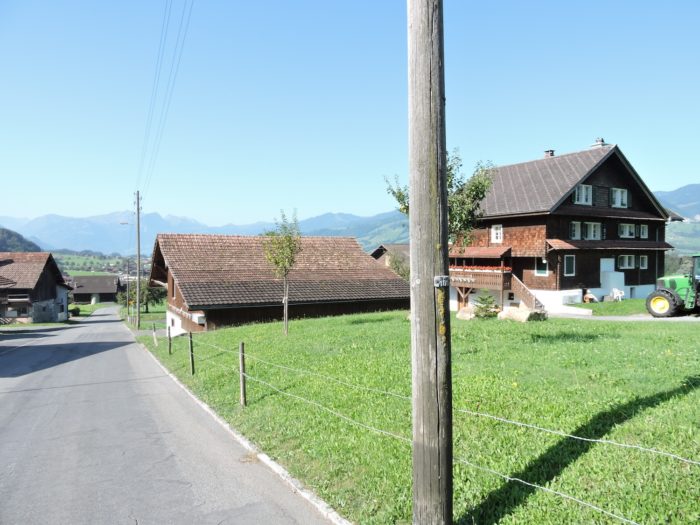 |
Here, a heartfelt tribute is paid to the Braunvieh, a cow truly deserving of such recognition.

| Before reaching the village center, the Via Jacobi takes a turn, climbing on the road above the village where contemporary architecture blends harmoniously with old wooden houses. |
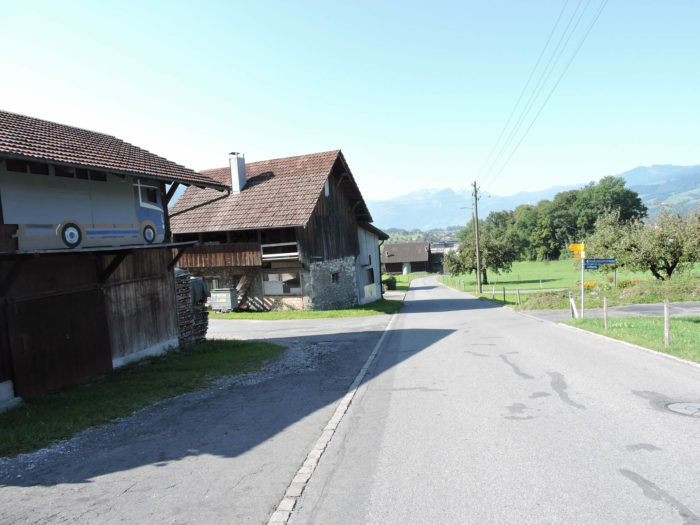 |
 |
| The slope gradually steepens, and soon, the asphalt gives way to a dirt road at the outskirts of the hamlet of Lätten. |
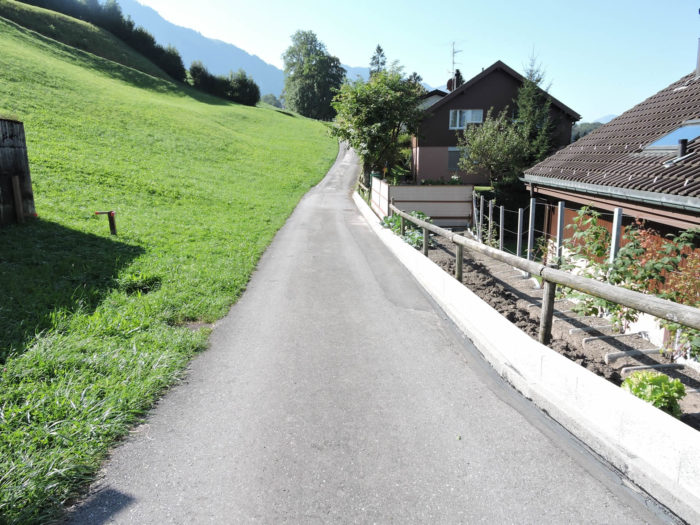 |
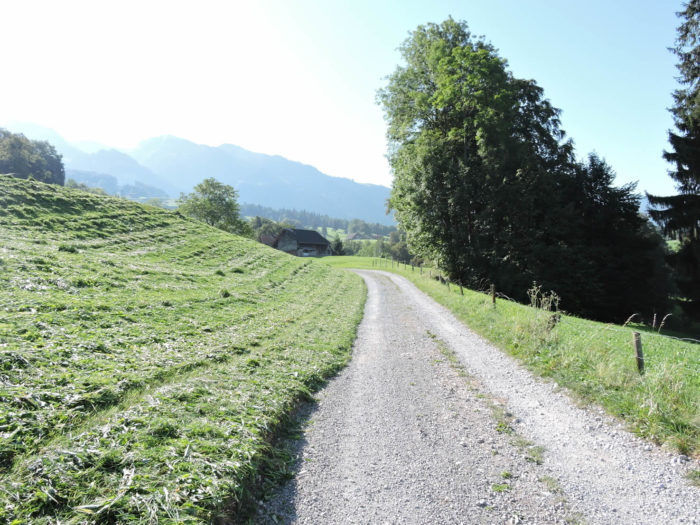 |
| Higher up, the path narrows to cross the peaceful Chemattbach stream, winding through centuries-old beeches and chestnut trees. |
 |
 |
| And here it is again, that vast greenery so characteristic of Swiss meadows—a path undulating through the grass on gentle hills, dotted here and there with wooden farms. |
 |
 |
| Then, higher up, an asphalt road appears, where Nicholas of Flüe seems to offer you a benevolent greeting from the roadside. |
 |
 |
| Just a bit further, at the place known as Lauibach, an inviting and well-stocked rest stop awaits pilgrims. It is worth noting that the Way of St James in Switzerland is not particularly crowded, mostly traveled by visitors from Germany, Austria, Eastern Europe, and, of course, Swiss Germans. |
 |
 |
| There, the small road crosses the Rüfibach, whose waters gently flow over pebbles. |
 |
 |
|
The Via Jacobi then joins the road to St Antoni, near a charming picnic spot nestled among beeches and maples.
|
 |
 |

| It passes the picturesque 17th-century Baroque chapel of St Antoni, recently restored, then follows the road along the Foribach. In this region, old houses rarely display the typical shingles of Eastern Switzerland; instead, dark and majestic wood appears to be the hallmark of these dwellings of incomparable beauty. |
 |
 |
| At the exit of the village of St Antoni, a steep trail climbs through the meadows. |
 |
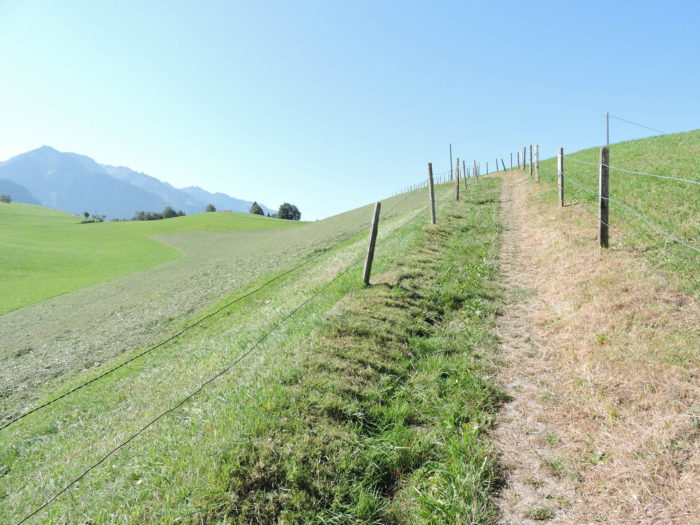 |
| At the summit of the climb, the trail stretches through the grass along a spectacular ridge, offering breathtaking views of the mountain range. Among these peaks, some rise to nearly 3,000 meters, between the Urner Alps and the Bernese Alps, while below, the imposing town of Kerns comes into view. |
 |
 |
| Nature once again unfolds in all its splendor. Below, Lake Sarnen glistens, while Sarnen, the capital of the half-canton of Obwalden, emerges at the edge of its shores. |
 |
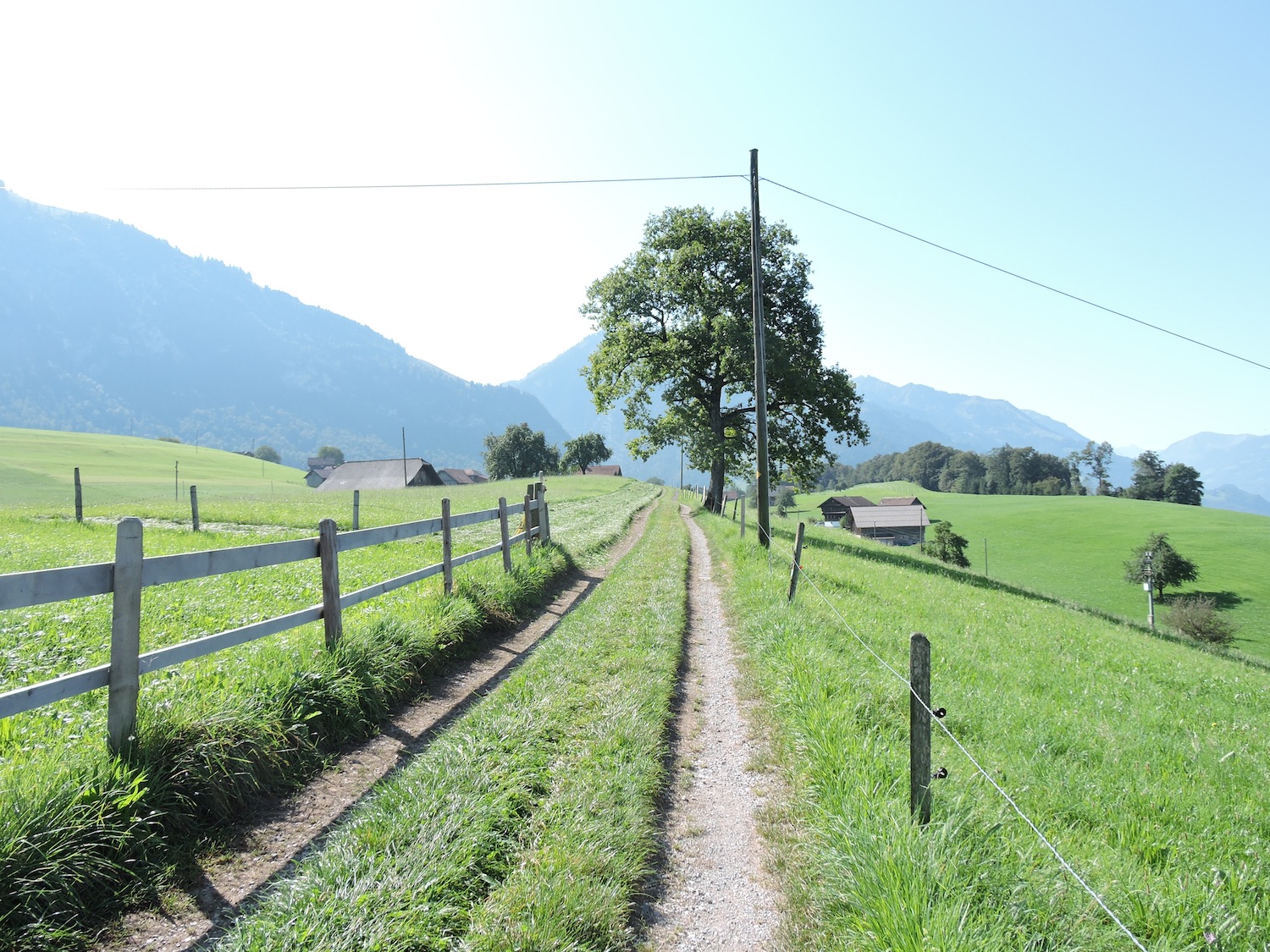 |
| Shortly after, the path reaches the place known as Schärpfli. |
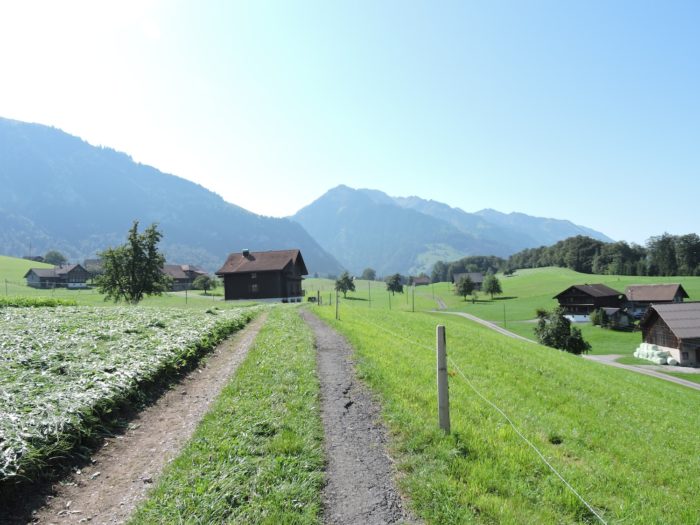 |
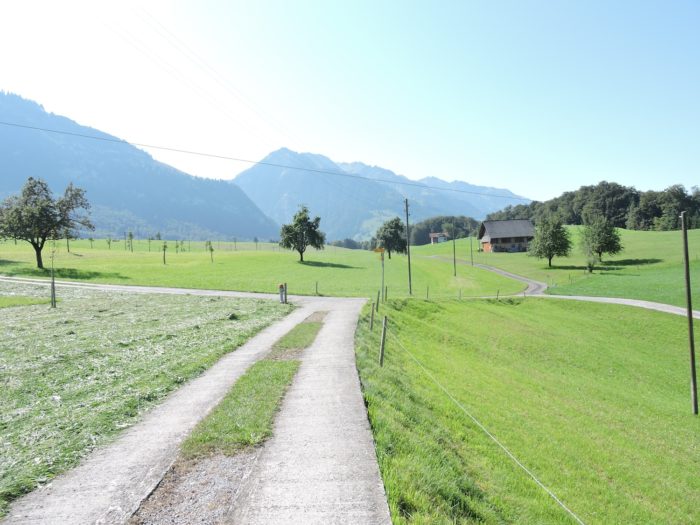 |
| The Via Jacobi then follows a short paved section near Unteregg. |
 |
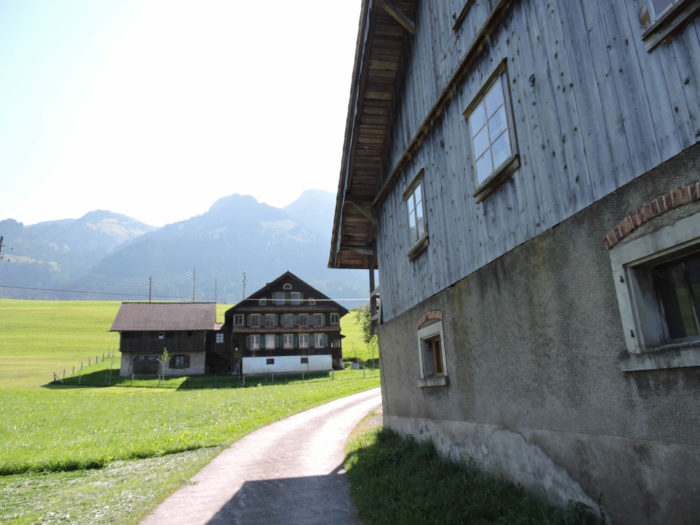 |
Section 4: Journey to the hermitage of the good Saint Nicholas of Flüe
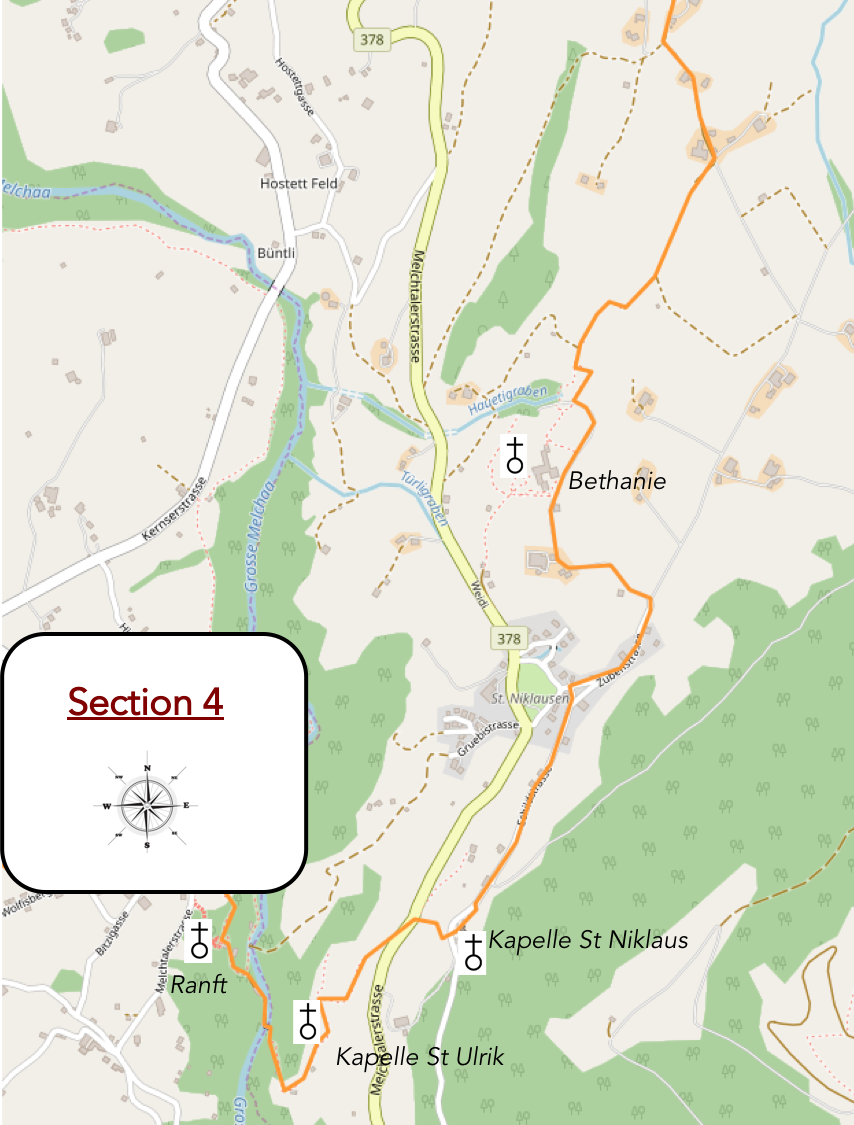
Overview of the route’s challenges: quite demanding, particularly within the Ranft valley, where the slopes are exceedingly steep.

|
The Via Jacobi extends gracefully through the rare farms of Unterregg, offering a living canvas of rural life. The peaceful atmosphere it emanates evokes a deep sense of grounding in tradition and the work of the land. .
|
 |
 |
| Soon after, it sinks back into the meadows, enveloped in the verdant hues of the surrounding nature. There, it blends harmoniously into the landscape, like an emerald ribbon unfurled by nature’s benevolent hands. |
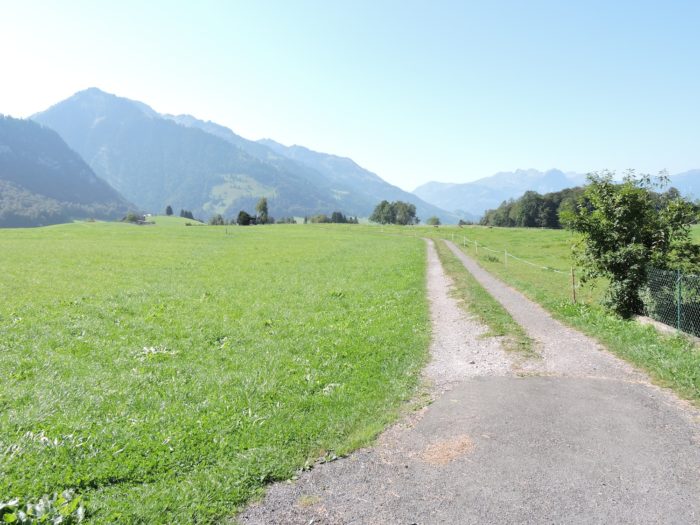 |
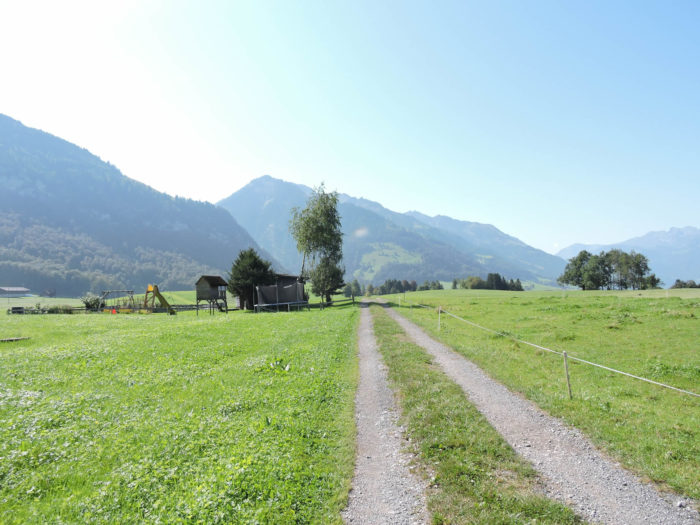 |
| At the bend of the small plateau, the path unfolds with natural elegance through the rolling meadows. The view of Lake Sarnen below captivates wandering souls, offering a vision both majestic and soothing, like a masterwork coming to life under the brush of nature. |
 |
 |
When your gaze turns backward, the Stanserhorn, like a sleeping giant, silently watches over the distant lands of Stans. Its imposing profile gracefully stands out against the horizon, like a vigilant guardian protecting the secrets of the mountain.
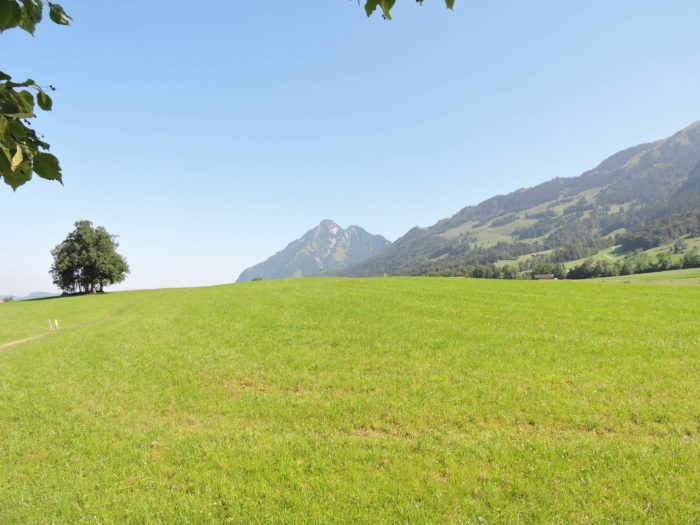
| Soon after, the path crosses a modest stream at the entrance of Bethany, a place full of history and spirituality. Nestled in the hills, a convent of Dominican sisters stands, a witness to timeless faith and boundless devotion. It is here, in this haven of peace, that the echoes of a life devoted to God and to serving others resonate. At this blessed spot, hospitality and sustenance are offered to pilgrims finding refuge under the care of a benevolent Providence. |
 |
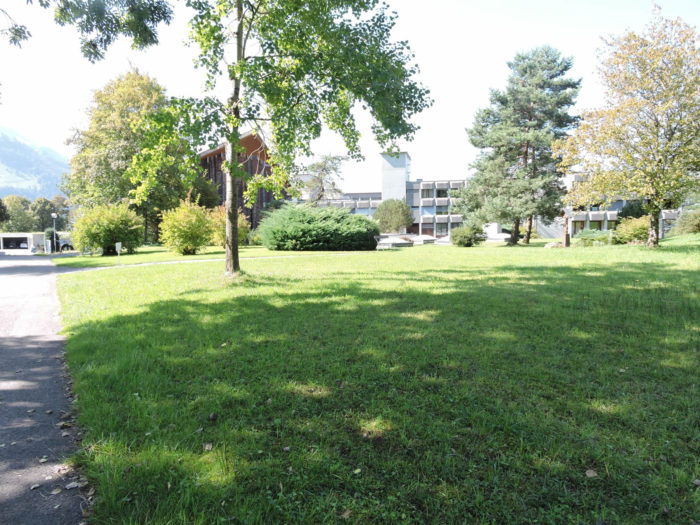 |
| Soon after, a road leads the walkers to the picturesque village of St. Niklausen, where history harmonizes with the surrounding Alpine landscape. Each step resonates like a symphony of ancient times, where whispers of the past mingle with the songs of the mountains. |
 |
 |
| But beware, lost traveler, for the signs on the road are as capricious as the stars in the sky. There are hardly any indications of the route here. We can only advise you to go up the hill to the chapel of St Nicholas of Myra before continuing down the Ranft Valley. To do this, you must raise your eyes to the chapel perched at the summit, a symbol of faith and devotion. There, between heaven and earth, lies the destiny of those who dare to climb the steep slopes of spirituality. As you ascend to the chapel, the imposing silhouette of the Grand Hotel of Flüeli emerges on the horizon, like a large candy nestled in the valley’s embrace. |
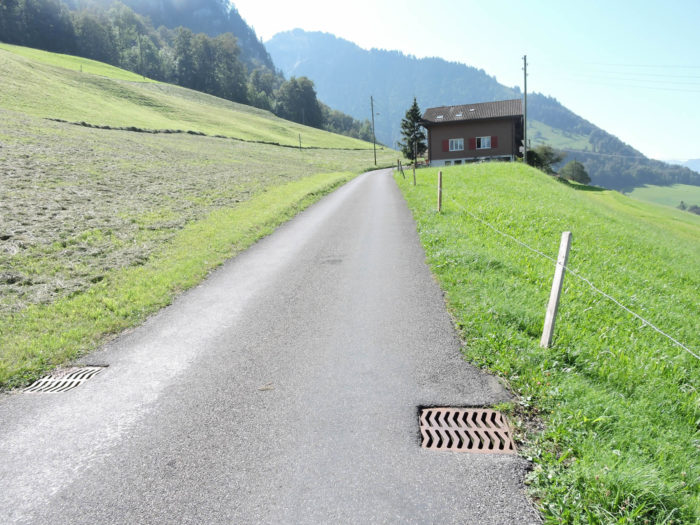 |
 |
| The site of the St. Niklausen chapel is magnificent. The chapel, dedicated to St Nicholas of Myra, was built around 1350. It therefore has no connection to the local Nicholas, Nicholas of Flüe. It contains Gothic frescoes in the choir, repeatedly covered with plaster and recently uncovered. The chapel was renovated in the 17th century, giving it a distinctly baroque touch, before being restored again at the end of the last century. |
 |
 |
As mentioned, the directions here are poorly marked and confusing. We will help you. You must arrive below near a small cross at the edge of the road. To do so, you need to descend the steep trail into the underbrush or through the meadows.

| When you reach the cross, you will magically and thankfully find the Via Jacobi 4 marker. Phew! |
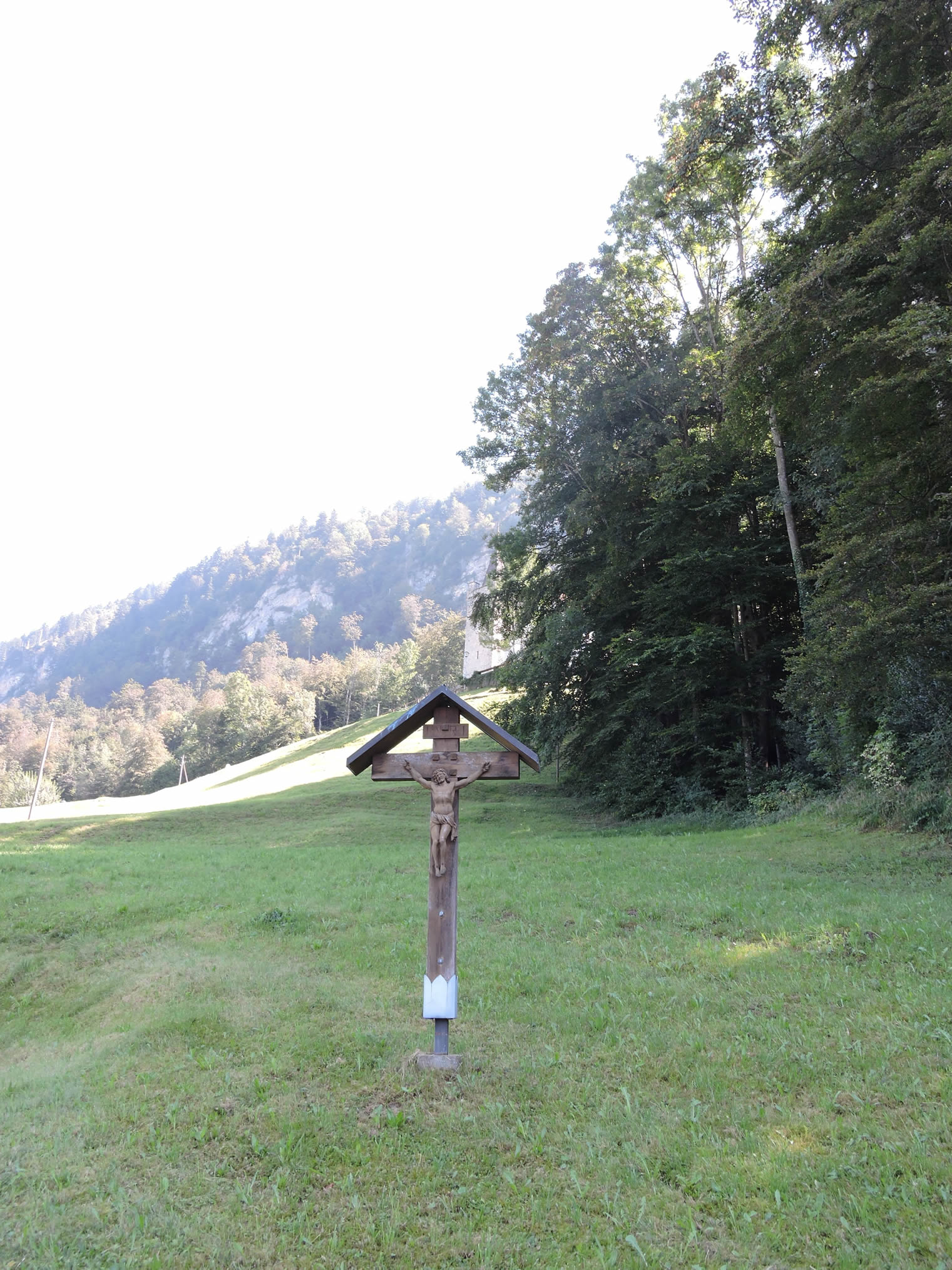 |
 |
| From the cross, a trail descends into the underbrush and then through the meadows into a narrow valley. The slopes are steep in the valley, often over 25%. The landscape transforms into a symphony of green, graceful in the enchanting valley. There, between shadow and light, the eternal ballet of nature plays, an enchanting dance where every movement tells a story. |
 |
 |
| And at the heart of this enchanted valley, the spirit of Brother Nicholas watches in silence, weaving the invisible threads of the past and the present. Every breath of wind, every rustle of grass tells his story, a timeless legend etched in the earth’s memory. |
 |
 |
|
The chapel of St Ulrich, like a forgotten jewel of time, stands proudly in the heart of the valley, guarding the secrets of history. According to legend, the 12th-century Romanesque chapel was erected where St Ulrich is said to have caused a spring to gush forth to quench his thirst. The frescoes depicting the Old Testament and the Last Judgment are faded, but remarkable.
|
 |
 |
| A steep trail, carefully laid out with the precision of an artist, invites you to plunge into the heart of the valley, where the murmurs of the Grosse Melchaa resonate like a call to adventure. Each step echoes as a challenge to the wild nature, each moment reveals the raw beauty of existence. |
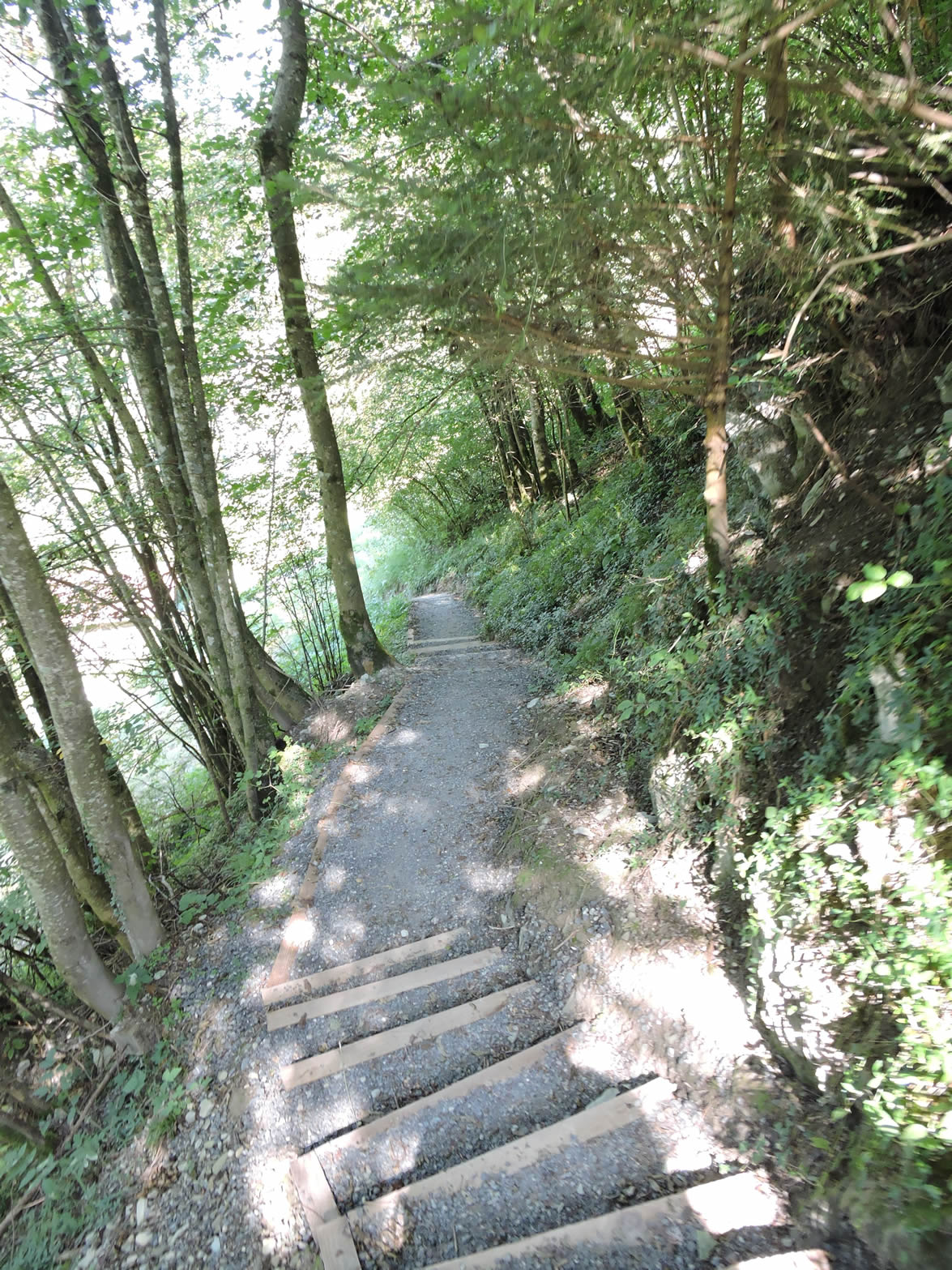 |
 |
| And around the bend of the trail, the Grosse Melchaa emerges majestically, a wild river with silver reflections. Its tumultuous waters whisper the secrets of the mountain, silent witnesses to the grandeur of nature. |
 |
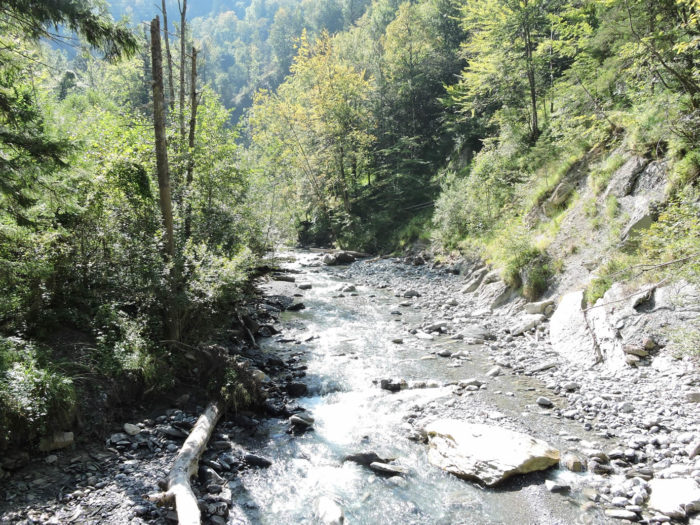 |
Section 5: Nicolas of Flüe, from life to death

Overview of the route’s challenges : a demanding journey through the depths of Ranft Valley, a pause at Flüeli before descending towards Sachseln, occasionally encountering steep slopes, particularly towards the end.

|
Nicolas de Flüe was born in the year of our Lord 1417, in Kerns, and later rose to the status of a farmer. He built his home in Flüeli, where, uniting his destiny with that of a spouse, he fathered five sons and an equal number of daughters. His responsibilities grew as he distinguished himself as an eminent member of the municipal council and judge, animated by a remarkable ability to reconcile disputes. Despite strong familial ties, a fervent desire to renounce all earthly possessions took root within him, a desire long fed by uncertainties. Ultimately, with his wife’s consent to his departure, he left. Clothed in the garb of a pilgrim, in the year 1467, Nicolas took leave of his home, his lands, and his kin. His initial intention to travel overseas was replaced by a new resolution: to settle on his own lands, on the edge of a deep ravine, not far from his home. In total destitution, facing the harshness of winter without food or drink, he rooted himself there. The following year, the locals built him a humble dwelling and chapel, transforming the farmer Nicolas de Flüe into Brother Klaus, a distinguished hermit. He then embraced the life of Brother Nicolas, dedicating himself according to tradition to the deprivation of food and drink, a testimony corroborated by the guardians of the Vatican, who investigated the facts. In 1481, a conflict erupted between the urban and rural cantons regarding the integration of Fribourg and Solothurn into the nascent Confederation. Nicolas’s sage advice then proved salutary in preserving peace within the Swiss Confederation at the Diet of Stans. For once, Nicolas’s saga is anchored in historical annals, in contrast to the legends surrounding perhaps the genesis of Switzerland, such as that of the Rütli. Beatified in the year 1649, Nicolas de Flüe remains an exemplar of virtue and wisdom.
As soon as the turbulent course of the Grosse Melchaa is crossed, the trail leads to the lower chapel, called Untere Ranftkapelle, a Gothic building constructed in 1501. The interior walls, adorned with 16th-century frescoes, give this place an almost divine aura, imbued with profound religiosity.
|
 |
 |
|
 |
 |
The hermitage itself is just a stone’s throw away, above a chalet where souvenirs are sold.

| Another chapel is revealed on the horizon, named Obere Ranftkapelle, overlooking the cell where the hermit lived. Rebuilt at the end of the 17th century, this chapel contains a series of paintings depicting the life of Brother Nicolas. As for the residence, it largely preserves its authenticity, although the stone cushion, an object of veneration, is sometimes replaced, stolen by admirers of the saint. |
 |
 |
| A narrow cobbled path winds through the meadows, linking the Ranft to the Flüeli plateau, dotted with visitors laboring on the steep slope, attesting to the undeniable appeal of these places. |
 |
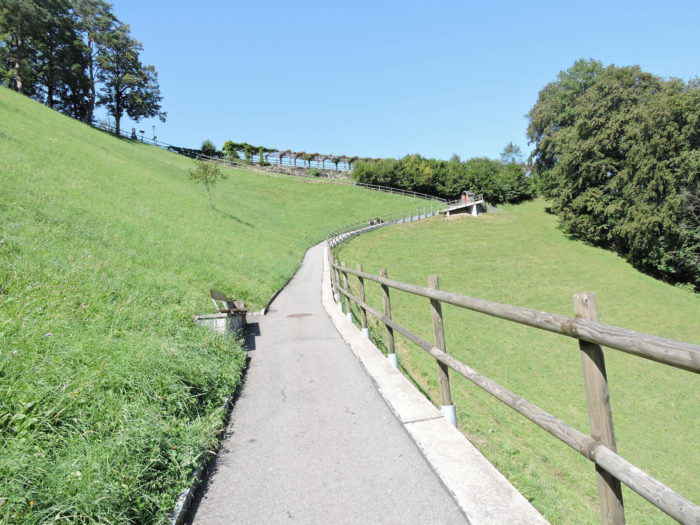 |
For visitors, an indication of walking time is provided, not for the ascent but for the descent.

| Flüeli elegantly reveals a building reminiscent of fairy tales, evoking the enchanting charm of the Sleeping Beauty castle. Attracting a host of Swiss and foreign visitors to the Ranft, this blessed place rises majestically, with the church reigning on its promontory, overlooking the village with an almost divine aura. |
 |
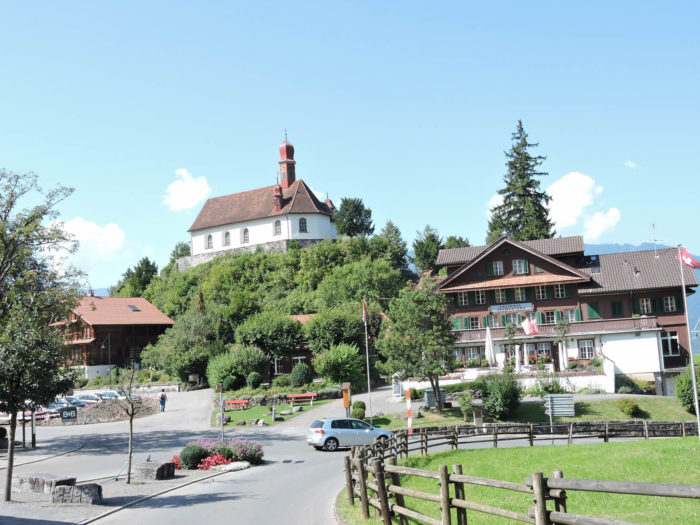 |
| Visitors also flock to view the dwelling that was once Nicolas’s domain, although its secular origin seems almost improbable. Formerly the undisputed property of the Flüe family, this building has become a cultural sanctuary, meticulously restored in 1946, where the soul of the past resides, permeating every corner of its walls with the unchanging history of the region. The visitor immerses themselves in a bygone era, where the furniture, the crockery, even the wood that creaks beneath each step, tells an eternal story. |
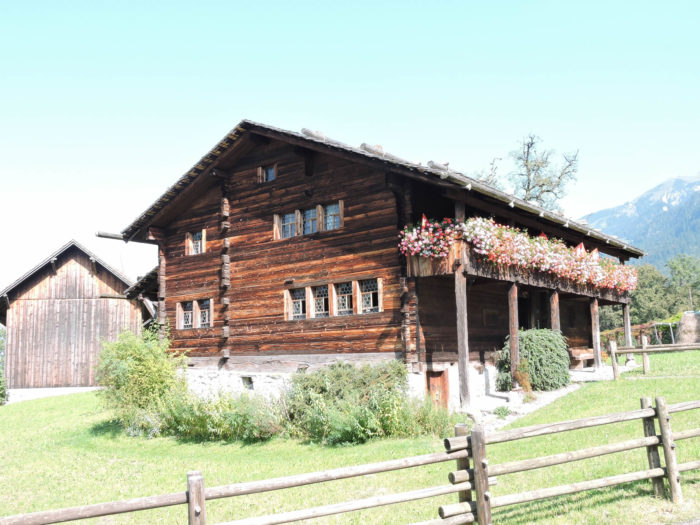 |
 |
| Under the watchful gaze of the church, the Via Jacobi carves its route out of Flüeli. |
 |
 |
Its path crosses a house of striking elegance, impressing the passerby with its beauty and timeless tranquility, draped under the burnt bark of the wood. It is a fraternal replica of Nicolas’s house.

| In its journey, it passes through a grove, thus beginning its descent towards Sachseln, like a slow dance orchestrated by nature itself. |
 |
 |
| The slope gradually steepens, propelling the hiker between wild grasses and beaten earth, along the sleeping farms, like a journey through the ages. |
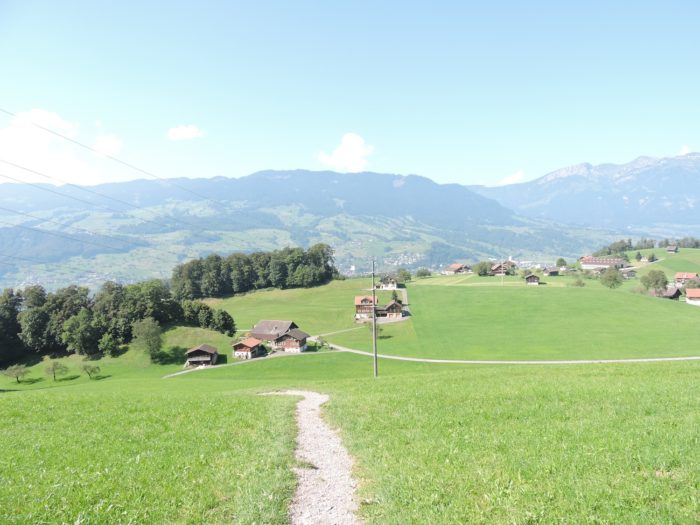 |
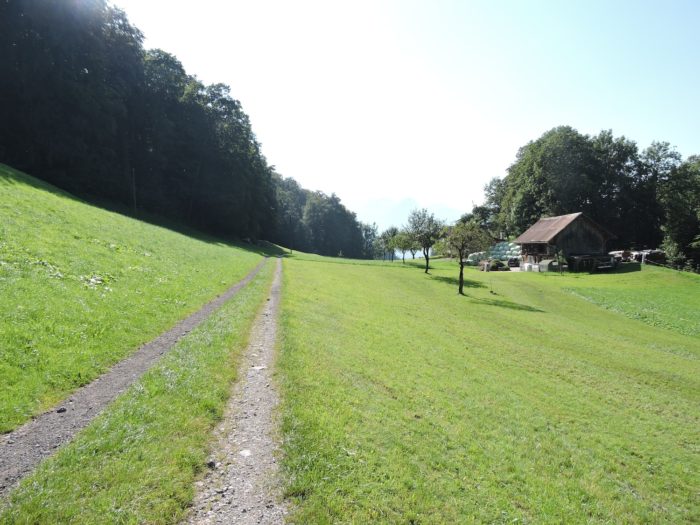 |
| Lower down, at a place called Ingang, Sachseln reveals itself, promising half an hour more of walking to those who aspire to its welcoming shores. |
 |
 |
|
The slope increases as the path weaves through beeches, chestnut trees, and maples, leading to the discovery of Sachseln, peacefully nestled at the edge of Lake Sarnen.
|
 |
 |
| Here, nature displays its splendor with a generosity worthy of the most beautiful illustrated pages, breathing purity and authenticity. |
 |
 |
| As the path nears the isolated farms of Endi, the slope becomes steeper, and the path changes direction. |
 |
 |
| The path then meanders gracefully between fields and woodlands, until it reaches a small road above Sachseln. |
 |
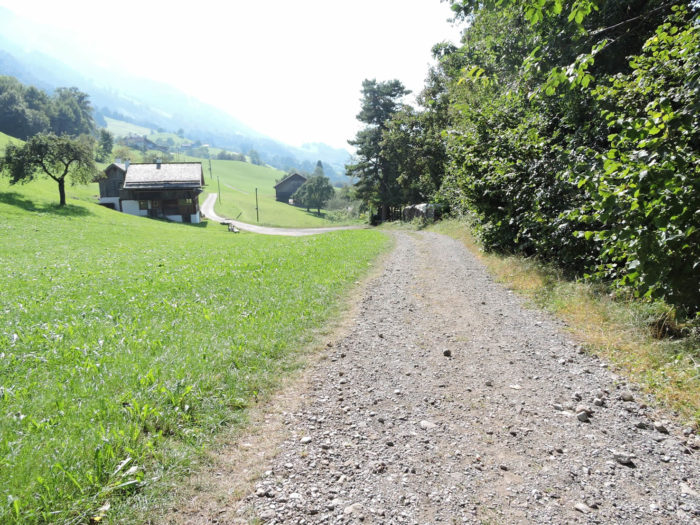 |
| Alongside old houses carefully restored, which seem to thrive as second homes, it is easy to imagine the sweetness of life in these places. |
 |
 |
| From the top of this promontory, Sachseln unveils itself serenely, while Sarnen, the capital of the half-canton of Obwald, is faintly visible in the distance, at the end of the lake. |
 |
 |
| Soon after, the Via Jacobi leaves the pavement and plunges into a mysterious undergrowth, like a nymph disappearing into the shadows of the forest, inviting the walker to follow its secret meanders. |
 |
 |
| A steep trail rushes down the slope to the gates of Sachseln, occasionally interrupted by steps to ease the descent. |
 |
 |

| On the heights of the town, ancient houses stand proudly, displaying their facades adorned with shingles. The steepness of the land persists until the heart of the town, where a community of about 4,850 souls resides. |
 |
 |
 |
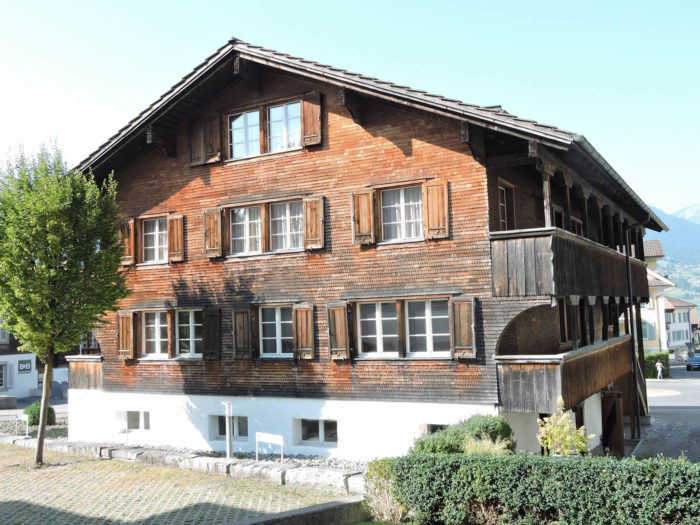 |
| To fully grasp the local context, a historical overview is necessary. The parish church dedicated to Saint Theodule plays a dual role as an ordinary place of worship and a pilgrimage site dedicated to Nicholas of Flüe. This edifice is categorized as a cultural treasure of paramount importance to the nation. Its original construction dates back to the 13th century. Brother Klaus, an eminent figure, was buried here on March 21, 1487, a singular practice for a layman of the countryside.
The canonization of the saint in the mid-17th century led to a continuous influx of pilgrims to Sachseln. Faced with this growing demand, the modest church proved too small, prompting the construction of a new sacred edifice. The local inhabitants actively involved themselves, both through their labor and fiscal contributions, in the realization of this new church. The foundation stone was laid in 1672, while both churches were simultaneously used, arranged at right angles. This arrangement allowed for the continuation of religious celebrations in the old church during the construction of the new sanctuary. In 1679, the nave was completed, and the oak coffin containing Brother Klaus’s remains was transferred to the new structure. Meanwhile, the demolition of the old church began, with the exception of the Marienkapelle, thus preserving the original setting of the saint’s tomb. Around 1703, an ossuary was erected on this site, while in 1878, the two buildings merged to form the current mortuary chapel. The construction of the church as a whole spanned a period of 12 years, from 1672 to 1684. Subsequent modifications were minor, except for the relocation of Brother Klaus’s tomb to the high altar in 1976, now visible through a window, surmounted by a statue crafted by a local goldsmith in 1934. The saint’s relics rest in a chrome steel receptacle. Thus, the tower dating from the 13th century, surmounted by a baroque dome added in the 17th century, remains the centerpiece of the mortuary chapel. Despite the vicissitudes that marked the journey of the saint’s remains, their presence, albeit in a dilapidated state, remains perceptible in the mortuary chapel (Grabkapelle). |
 |
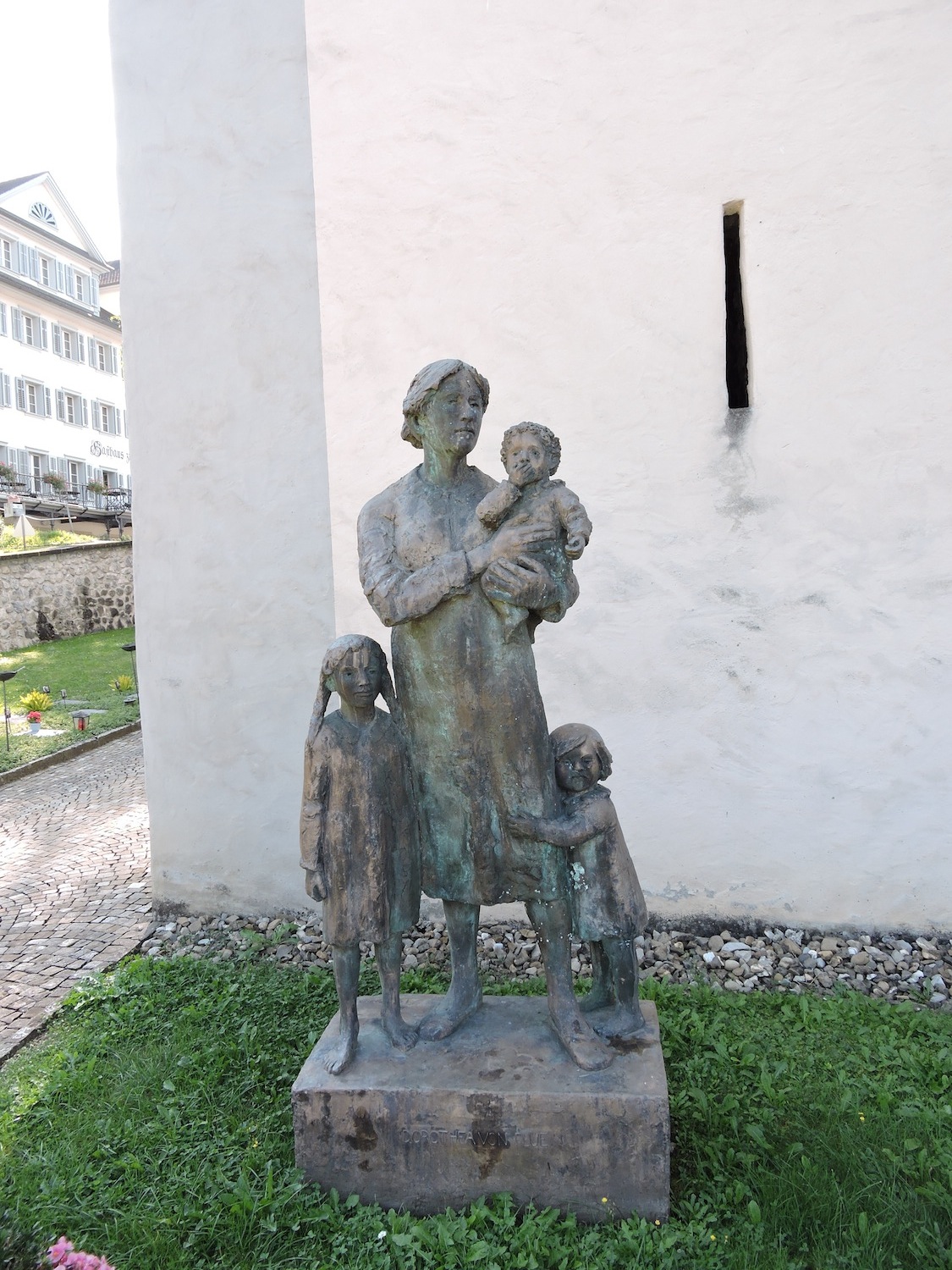 |

| The church of Sachseln, with its dark marbles and black hues, stands as a baroque architectural gem of rare beauty. |
 |
 |
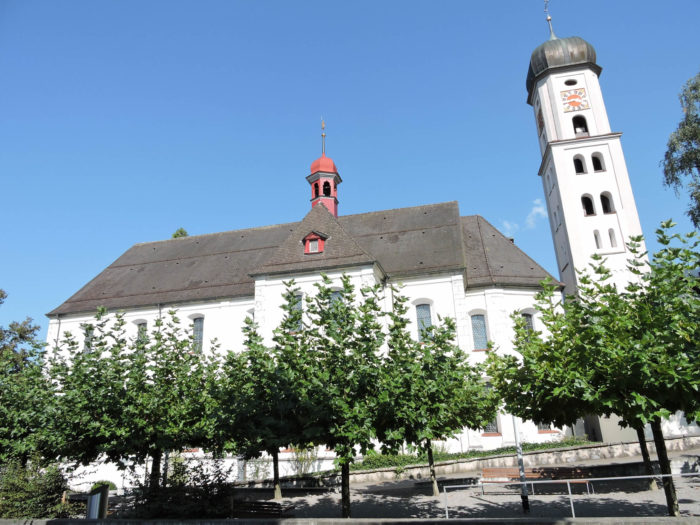
| Since 1610, the hermit’s robe has been carefully preserved in the parish church. Its authenticity has been verified and attested. In 1975, this robe, weathered by time, underwent meticulous restoration at the National Museum in Zurich. |
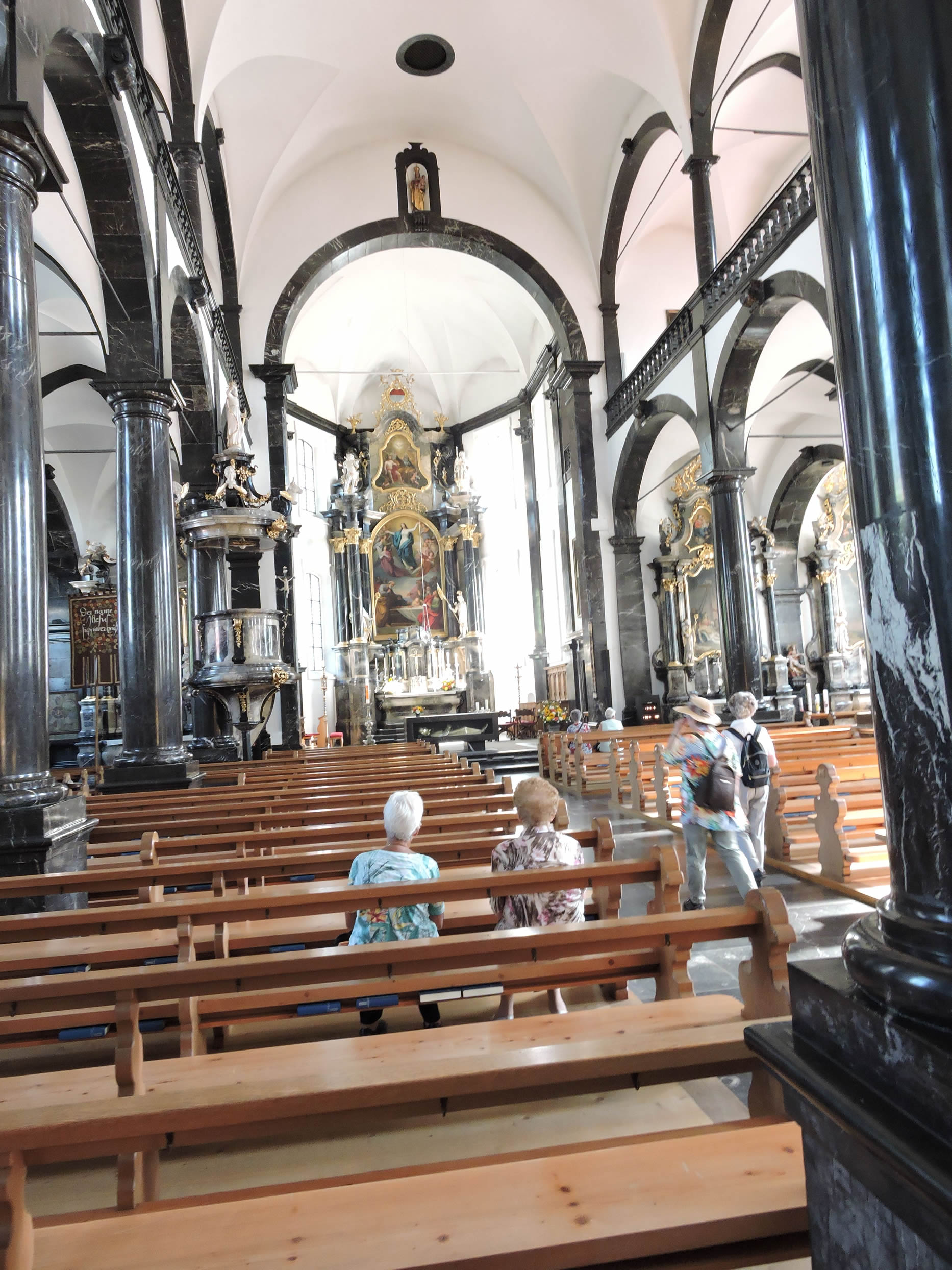 |
 |

| Charming half-timbered houses line the square adjacent to the church, also housing a museum dedicated to the saint. If you feel inclined to extend your stay, the possibility is offered right here, although for a more refined experience, an excursion to Zollhaus, five kilometers away, offers an exceptional inn. |
 |
 |
Accommodation on Via Jacobi
- B&B Wallimann-Sasaki, Rohrmatte 6, St Jakob; 041 610 99 65/079 337 99 65; Guestroom, dinner, breakfast
- Werner & Béatrice Barmettler, Oberhofstatt, St Jakob; 041 610 99 65; Guestroom, dinner, breakfast
- Kloster Béthanie, Bethanienstrasse, St Niklausen; 041 666 02 00; Guestroom, dinner, breakfast
- Jugendunterkunft, Dossen 2, Flüeli; 041 660 85 50: Youth hostel, cuisine
- Marianne Von Ah, Chilweg 24, Flüeli; 041 660 69 41; Guestroom, breakfast
- Hôtel PaxMontana, Dossen 1, Flüeli; 041 662 24 00; Hotel***, dinner, breakfast
- Hôtel Klausenhof, Melchtalerstrasse 25, Flüeli; 041 666 37 77; Hotel***, dinner, breakfast
- Hotel FlüeMatte, Flüeli; 041 660 12 84; Hotel***, dinner, breakfast
- B&B Geisser & Joller, Hansenmatti 3, Sachseln; 041 610 74 06/079 278 98 74; Guestroom, breakfast
- Franziska Santana, Seestrasse 24, Sachseln; 041 660 45 09; Guestroom, breakfast
- Vreni Baumgartner, Hansenmatti 4, Sachseln; 079 235 84 13; Guestroom, breakfast
- Gasthaus Engel, Brünigstrasse 100, Sachseln; 041 660 36 46; Hotel, dinner, breakfast
- Gasthaus Löwen, Brünigstrasse 109, Sachseln; 041 660 14 48; Hotel, dinner, breakfast
- Hôtel Restaurant Bahnhof, Bahnhofstrasse 15, Sachseln; 041 660 14 08; Hotel, dinner, breakfast
- Hôtel Kreuz, Bruder Klausenweg 1, Sachseln; 041 660 53 00; Hotel**** dinner, breakfast
It is not difficult to find accommodation on this stage. Füeli is also a pleasant stop. You will be at the end of the stage in a town with all the necessary shops. Nevertheless, it is advisable to book in advance for safety.
Feel free to add comments. This is often how you move up the Google hierarchy, and how more pilgrims will have access to the site.
|
 |
Next stage : Stage 8: From Sachseln to Brünig Pass |
|
 |
Back to menu |






















































































